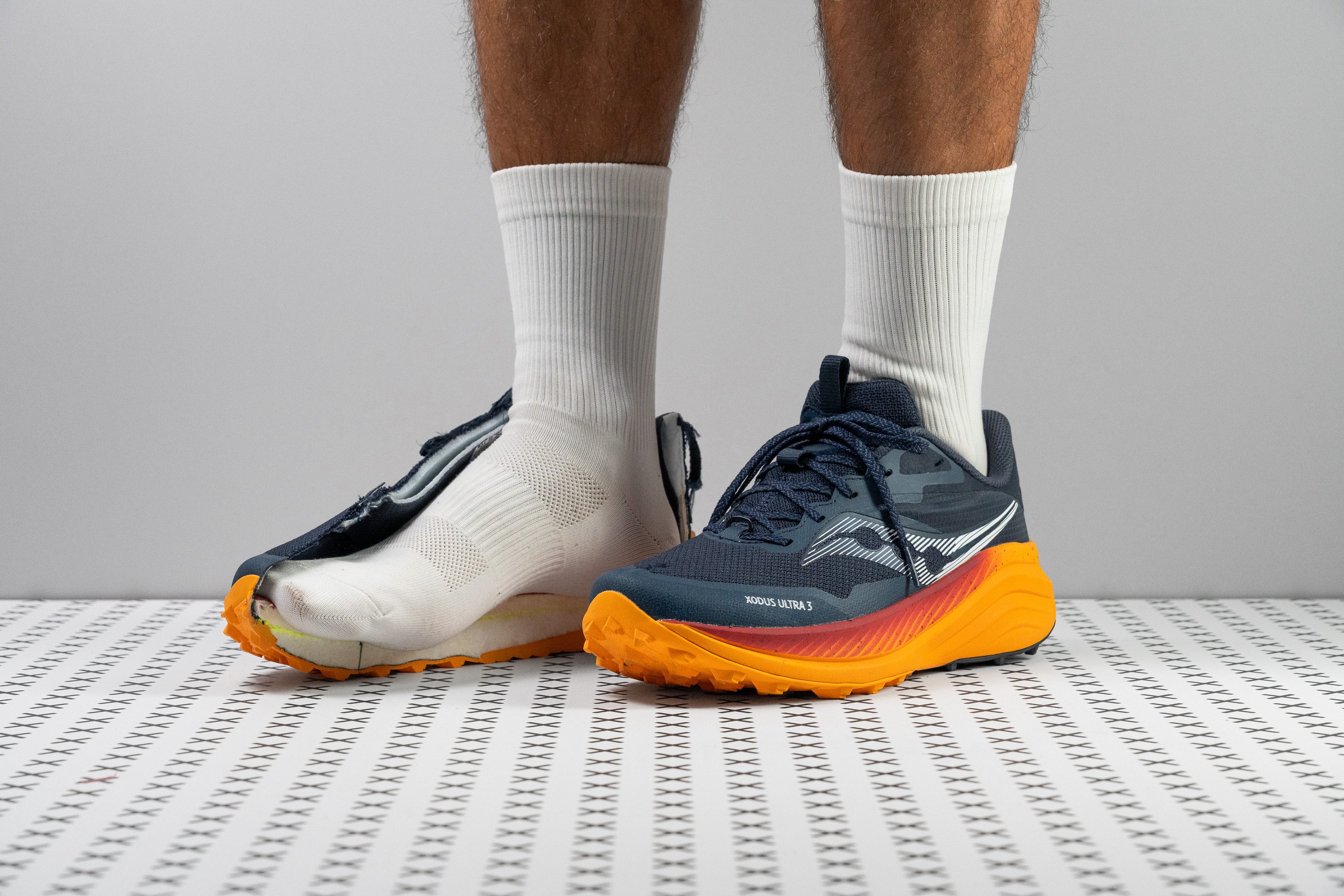Our verdict
Pros
- More cushioning!
- Plush and energetic midsole
- Versatile across various terrains
- Doubles as a hiking shoe
- Highly breathable upper
- Ready for ultras
- Non-intrusive rock plate
- Stable despite increased stack
- Unique PWRRUN+ footbed
Cons
- Lacks reflective elements
- Weight increase
- Reduced agility
Audience verdict
Comparison
The most similar running shoes compared
+ + Add a shoe | |||||
|---|---|---|---|---|---|
| Audience score | 87 Great! | 85 Good! | 88 Great! | 87 Great! | |
| Price | £150 | £150 | £160 | £150 | |
| Trail terrain | Technical | Light | ModerateTechnical | ModerateTechnical | |
| Shock absorption | Moderate | Moderate | Moderate | High | |
| Energy return | Moderate | Moderate | Moderate | Moderate | |
| Traction | - | High | - | - | |
| Arch support | Neutral | Neutral | Neutral | Neutral | |
| Weight lab Weight brand | 10.7 oz / 302g 10.2 oz / 288g | 11 oz / 312g 10.9 oz / 309g | 10.3 oz / 293g 10.4 oz / 295g | 10.6 oz / 301g 10.6 oz / 301g | |
| Drop lab Drop brand | 5.9 mm 6.0 mm | 6.5 mm 6.0 mm | 7.2 mm 4.0 mm | 7.1 mm 4.0 mm | |
| Strike pattern | Mid/forefoot | Mid/forefoot | Mid/forefoot | Mid/forefoot | |
| Size | True to size | - | True to size | True to size | |
| Midsole softness | Soft | Soft | Soft | Soft | |
| Difference in midsole softness in cold | Small | Normal | Normal | Normal | |
| Plate | Rock plate | ✗ | ✗ | ✗ | |
| Toebox durability | Decent | Decent | Good | Very bad | |
| Heel padding durability | Good | Bad | Good | Decent | |
| Outsole durability | Good | Decent | Good | - | |
| Breathability | Moderate | Moderate | Moderate | Moderate | |
| Width / fit | Medium | Medium | Medium | Medium | |
| Toebox width | Medium | Medium | Narrow | Narrow | |
| Stiffness | Moderate | Moderate | Moderate | Moderate | |
| Torsional rigidity | Stiff | Stiff | Stiff | Moderate | |
| Heel counter stiffness | Flexible | Stiff | Flexible | Moderate | |
| Lug depth | 4.3 mm | 3.5 mm | 3.9 mm | 5.0 mm | |
| Heel stack lab Heel stack brand | 35.1 mm 36.0 mm | 37.6 mm 36.0 mm | 38.0 mm 33.0 mm | 38.6 mm 39.4 mm | |
| Forefoot lab Forefoot brand | 29.2 mm 30.0 mm | 31.1 mm 30.0 mm | 30.8 mm 29.0 mm | 31.5 mm 35.4 mm | |
| Widths available | Normal | Normal | Normal | NormalWide | |
| Season | All seasons | All seasons | All seasons | All seasons | |
| Removable insole | ✓ | ✓ | ✓ | ✓ | |
| Orthotic friendly | ✓ | ✓ | ✓ | ✓ | |
| Ranking | #351 Bottom 46% | #200 Bottom 46% | #132 Top 36% | #160 Top 44% | |
| Popularity | #462 Bottom 30% | #186 Top 50% | #103 Top 28% | #27 Top 8% |
Who should buy
We've thoroughly tested the Xodus Ultra 3 and really recommend it for:
- Those disappointed by the previous Xodus Ultra's upper, as this one is significantly improved and feels really luxurious.
- Runners seeking a versatile, flexible, and comfortable trail shoe that doesn't mind a bit of extra weight.
- Ultra runners looking for a non-plated trail shoe that includes a superfoam at its core, offering high performance at a price lower than many racing options.
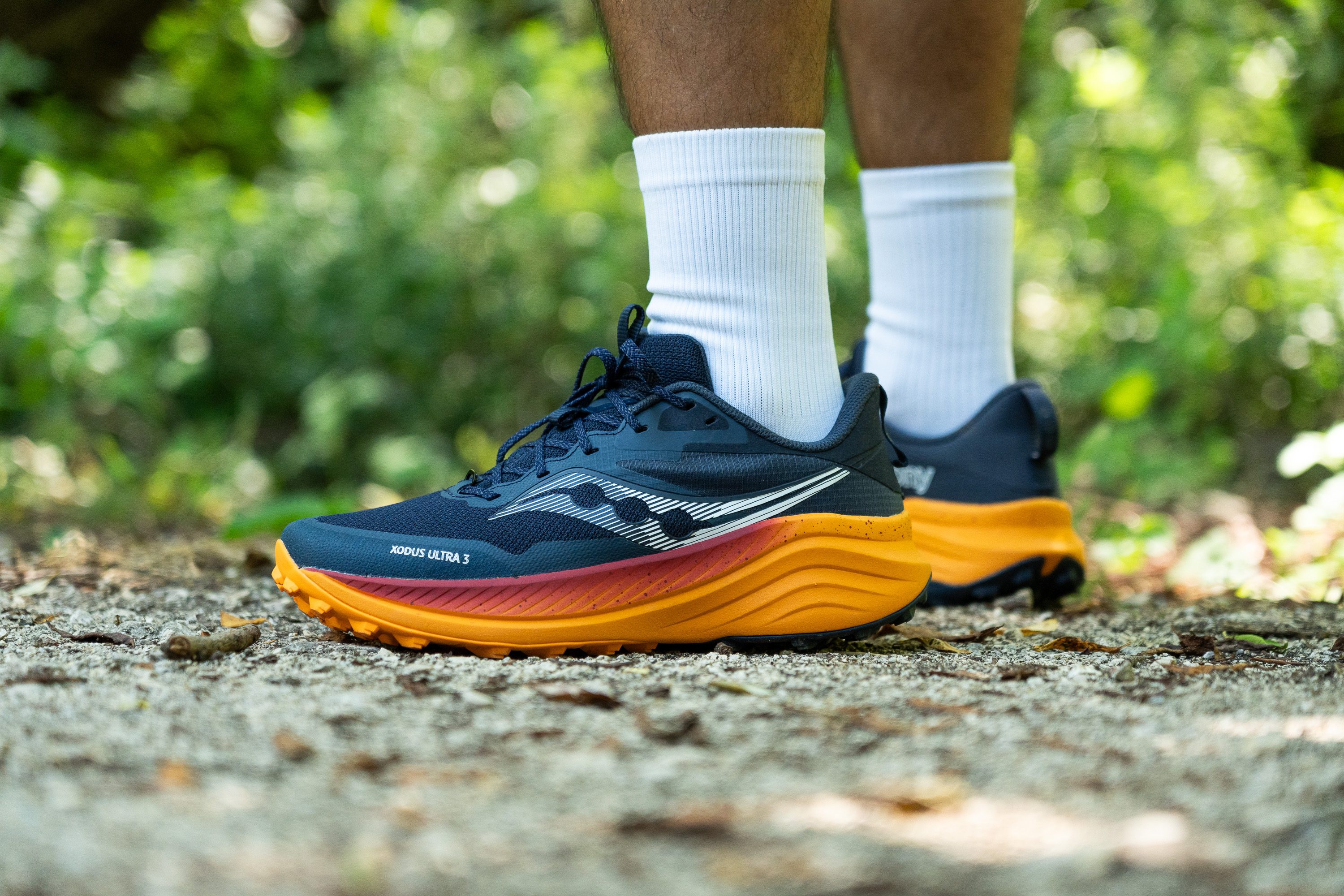
Who should NOT buy
While it aims to be a great all-rounder, the Xodus Ultra 3 falls short in some areas. For instance, we think that models like the Nike Zegama 2 and the Hoka Speedgoat 6, with their partnerships with Vibram, offer much better outsoles for all conditions and terrains.
For those seeking a performance-oriented alternative, we've discovered in the lab that the Saucony Endorphin Edge is an excellent choice. It features full-length superfoam and a Carbitex plate, providing top-notch responsiveness and speed. Another solid option could be the Hoka Tecton X 2, which features a state-of-the-art MATRYX upper.

Cushioning
Shock absorption
We can confirm that the Xodus Ultra 3 lives up to its name and is fully ready for ultras. After lab testing, we found 125 SA of shock absorption in the heel and 113 SA in the forefoot—pretty solid results!
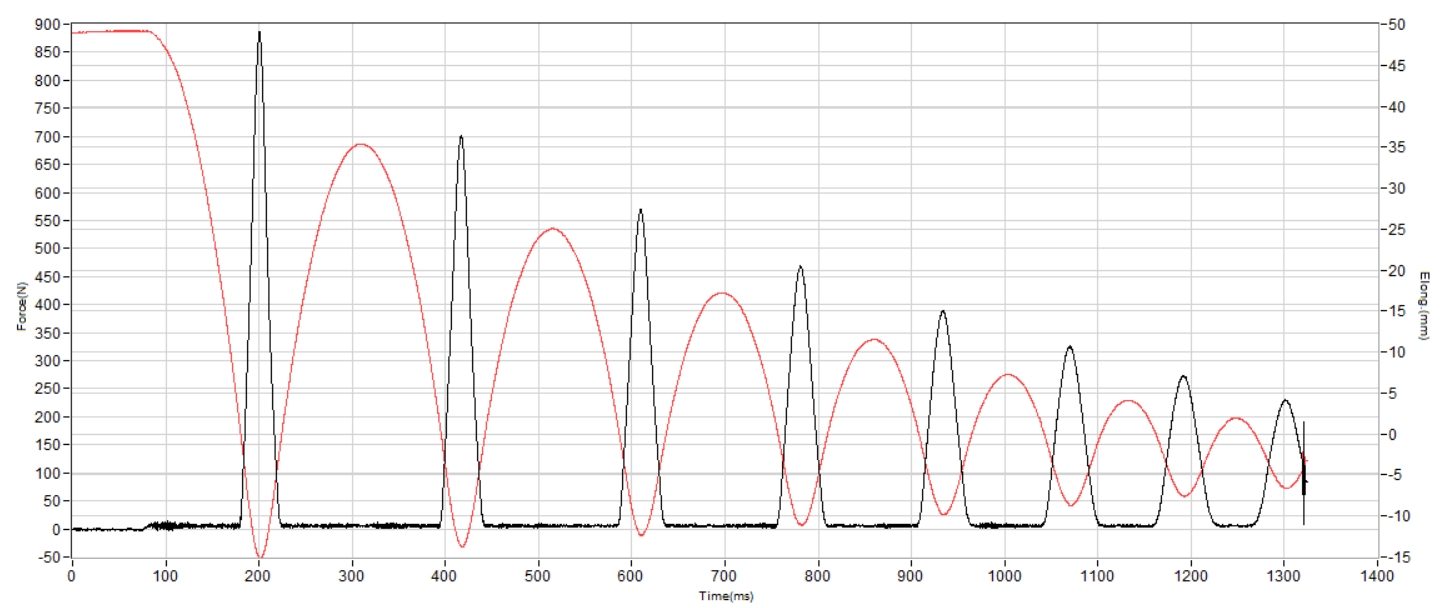
| Xodus Ultra 3 | 125 SA |
| Average | 122 SA |
Energy return
Saucony's standout advantage over many other brands in the trail scene is its use of superior foams like PWRRUN PB. That’s what gives it exceptional energy return, hitting 62.6% in the heel and an eye-popping 76.4% in the forefoot.
But why such a high number up front? That’s because the Xodus Ultra 3 uses 100% PWRRUN PB in the forefoot, which is a race-ready superfoam also found in road shoes like the Endorphin Pro 4. Meanwhile, the heel contains a firmer carrier foam that tones things down slightly—yet still outperforms most trail midsoles.
| Xodus Ultra 3 | 62.6% |
| Average | 55.6% |
Heel stack
After accepting the increase in weight, it turns out there's a silver lining—the Xodus Ultra 3 now boasts a greater stack height than its predecessor.
We measured the heel at 35.1 mm, striking an ideal balance for a trail shoe. Why is this significant? Trail shoes often feature 3, 4, or 5 mm lugs that offer minimal cushioning, unlike their road-running counterparts.
That’s why, if you seek energy return comparable to your average daily trainer, its trail version should be slightly taller yet not so elevated that it sacrifices stability—a delicate balance indeed.
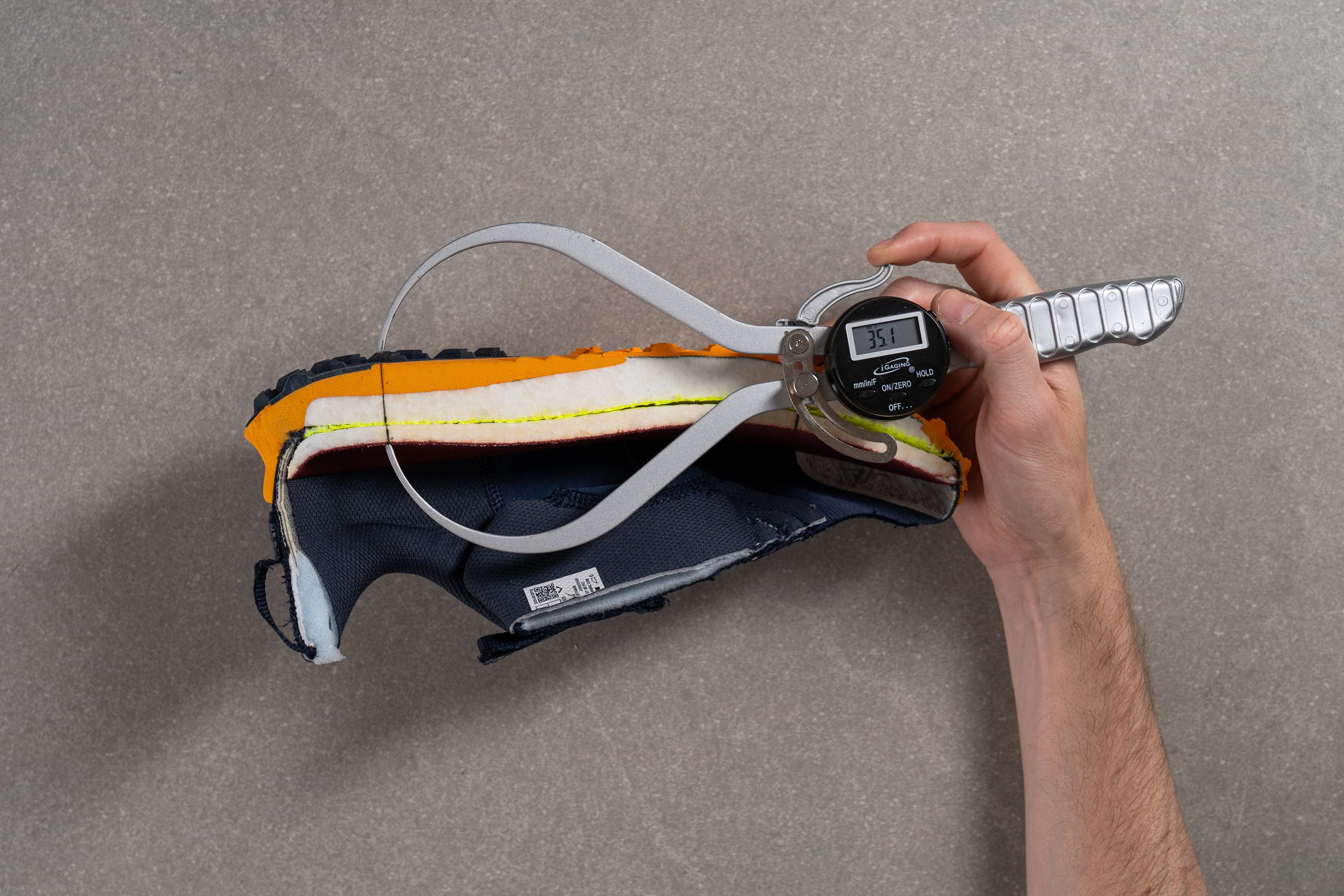
| Xodus Ultra 3 | 35.1 mm |
| Average | 32.6 mm |
Forefoot stack
We noticed a significant improvement in the forefoot of this model. While the XU2 offered a somewhat scant 26.8 mm, challenging for those who aren't heel strikers, the latest version steps up to 29.2 mm—providing some extra cushioning we truly appreciate especially for ultra distances.
This enhancement is great for everyone, but particularly for runners favouring forefoot or midfoot strikes. Perhaps the slight increase in weight isn't all that bad.
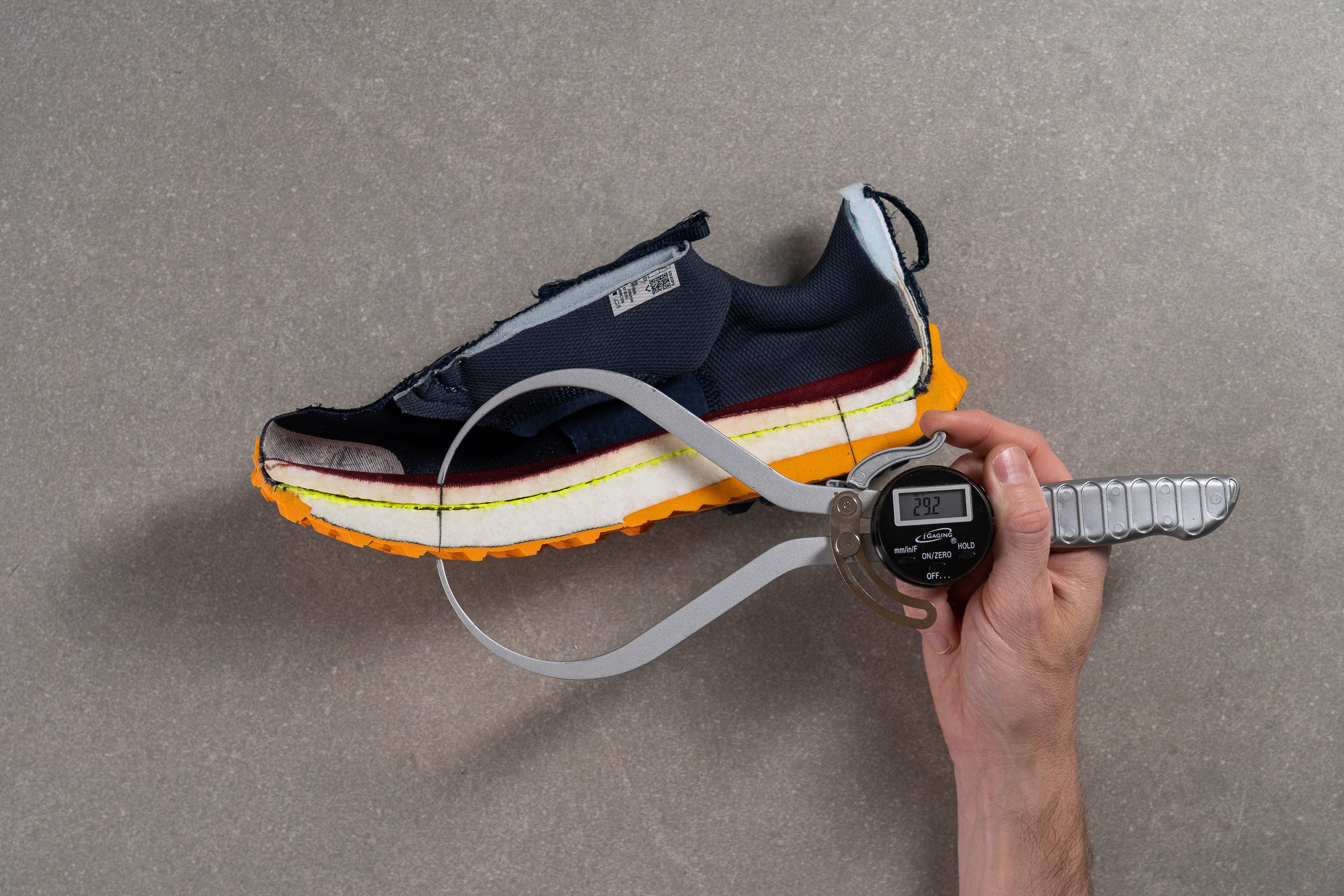
| Xodus Ultra 3 | 29.2 mm |
| Average | 25.1 mm |
Drop
Saucony claims the Xodus Ultra 3 has a 6 mm offset, and our measurements confirm this with remarkable precision. With a mere 0.1 mm deviation to 5.9 mm, this level of accuracy is quite exceptional.
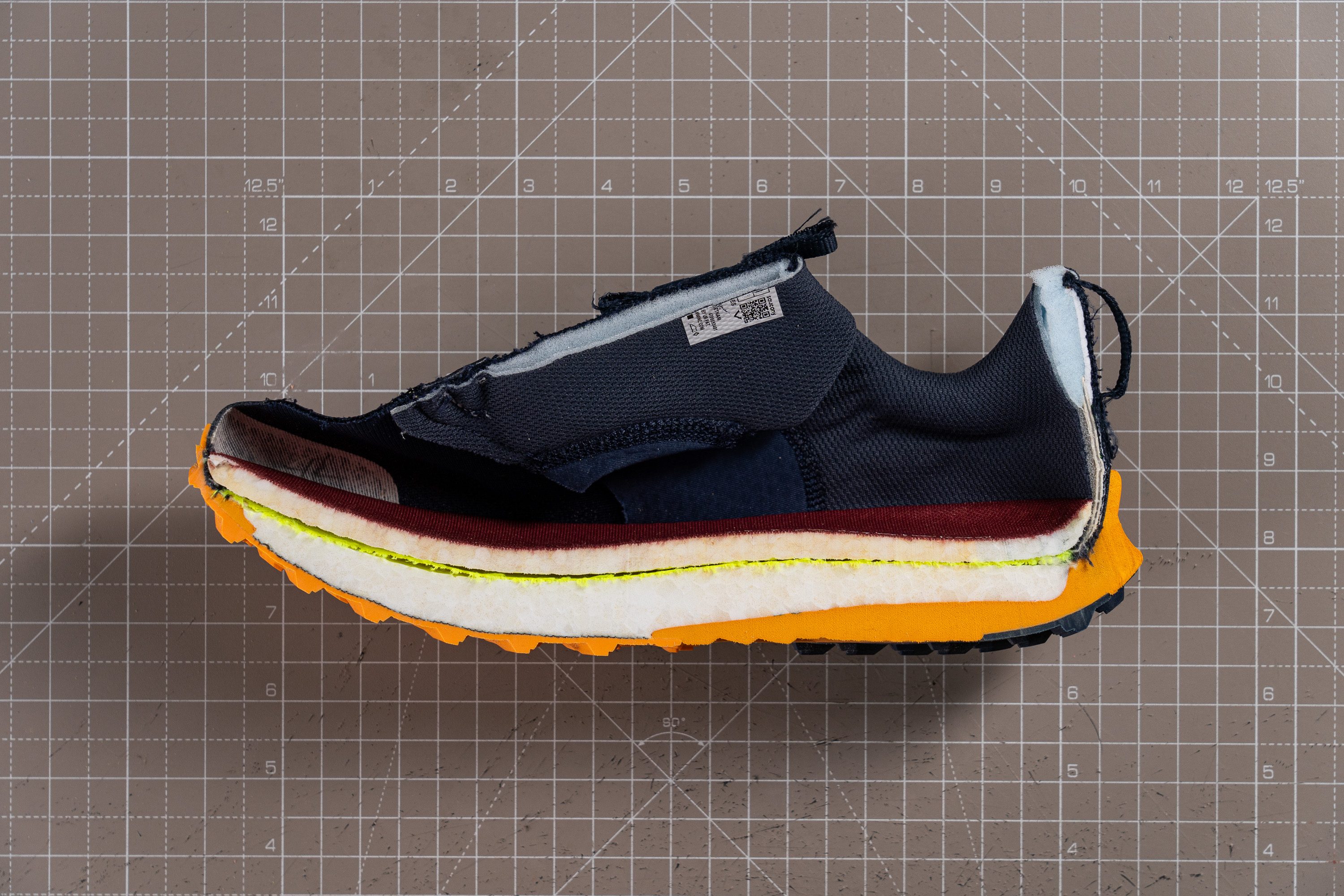
| Xodus Ultra 3 | 5.9 mm |
| Average | 7.5 mm |
Midsole softness
Another exciting feature of the Saucony Xodus Ultra 3 is its dual-foam configuration.
The primary layer, positioned closest to the foot and sandwiched between the insole and the secondary foam, is made from PWRRUN PB—a cutting-edge Pebax foam Saucony also uses in some of their quicker road shoes like the Endorphin Speed 3. This is why the Xodus Ultra 3 feels notably bouncier underfoot compared to many of its competitors.
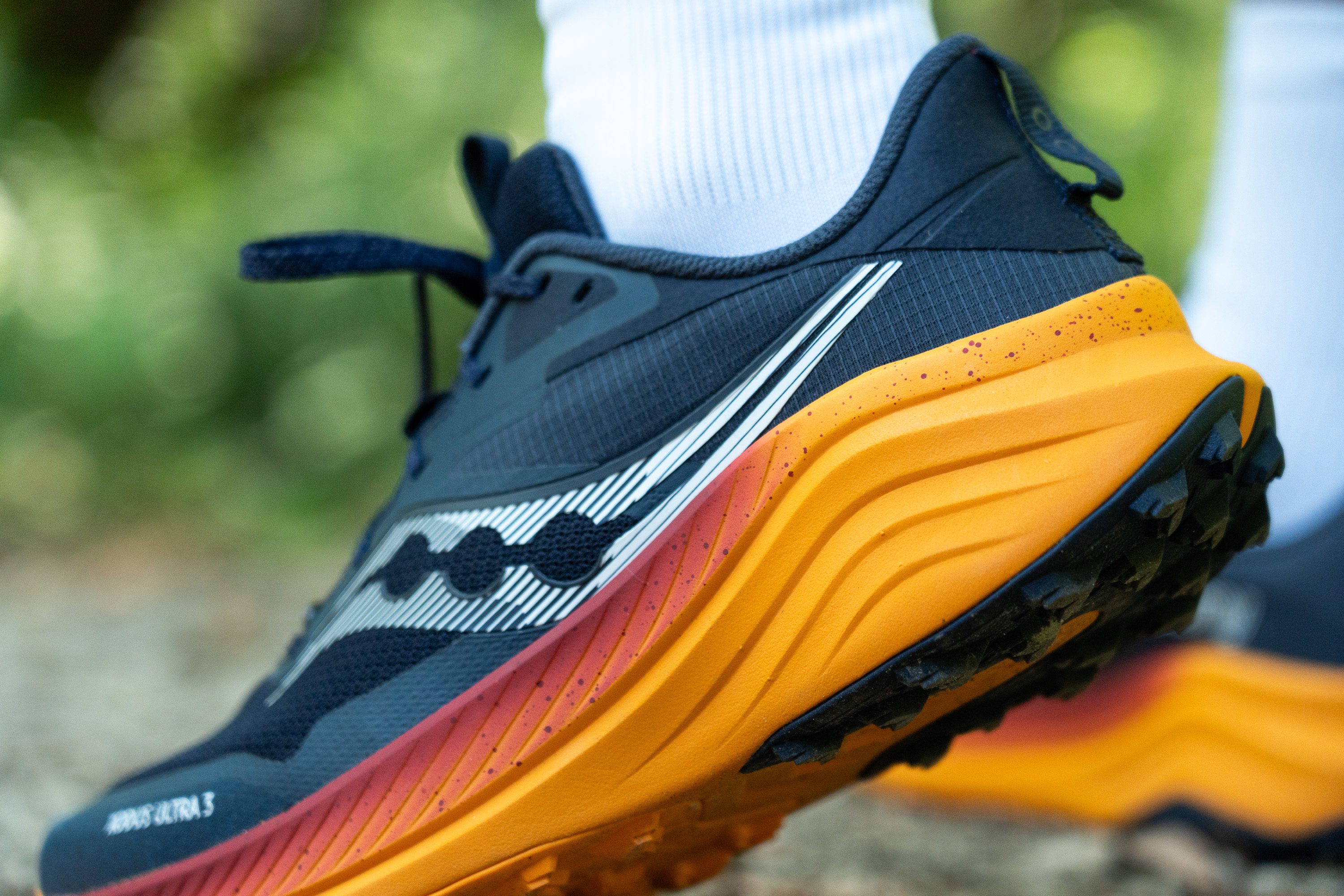
In terms of comfort, we've discovered that the American brand significantly adjusted the foam from the previous version, which was too firm for our tastes. Now, at 15.9 HA, it's softer and more comfortable for multi-hour runs.

| Xodus Ultra 3 | 15.9 HA |
| Average | 21.9 HA |
Secondary foam softness
The carrier foam in the XU3 is closer to the ground and acts as a shield for the more expensive PWRRUN PB. In this instance, Saucony opted for PWRRUN, a basic training foam that's more durable, though less responsive and soft. We measured it with our durometer at 24.0 HA.
Nonetheless, there's a greater amount of PWRRUN PB than PWRRUN in the heel, and zero PWRRUN in the forefoot, so we're really pleased with the distribution of the midsole!
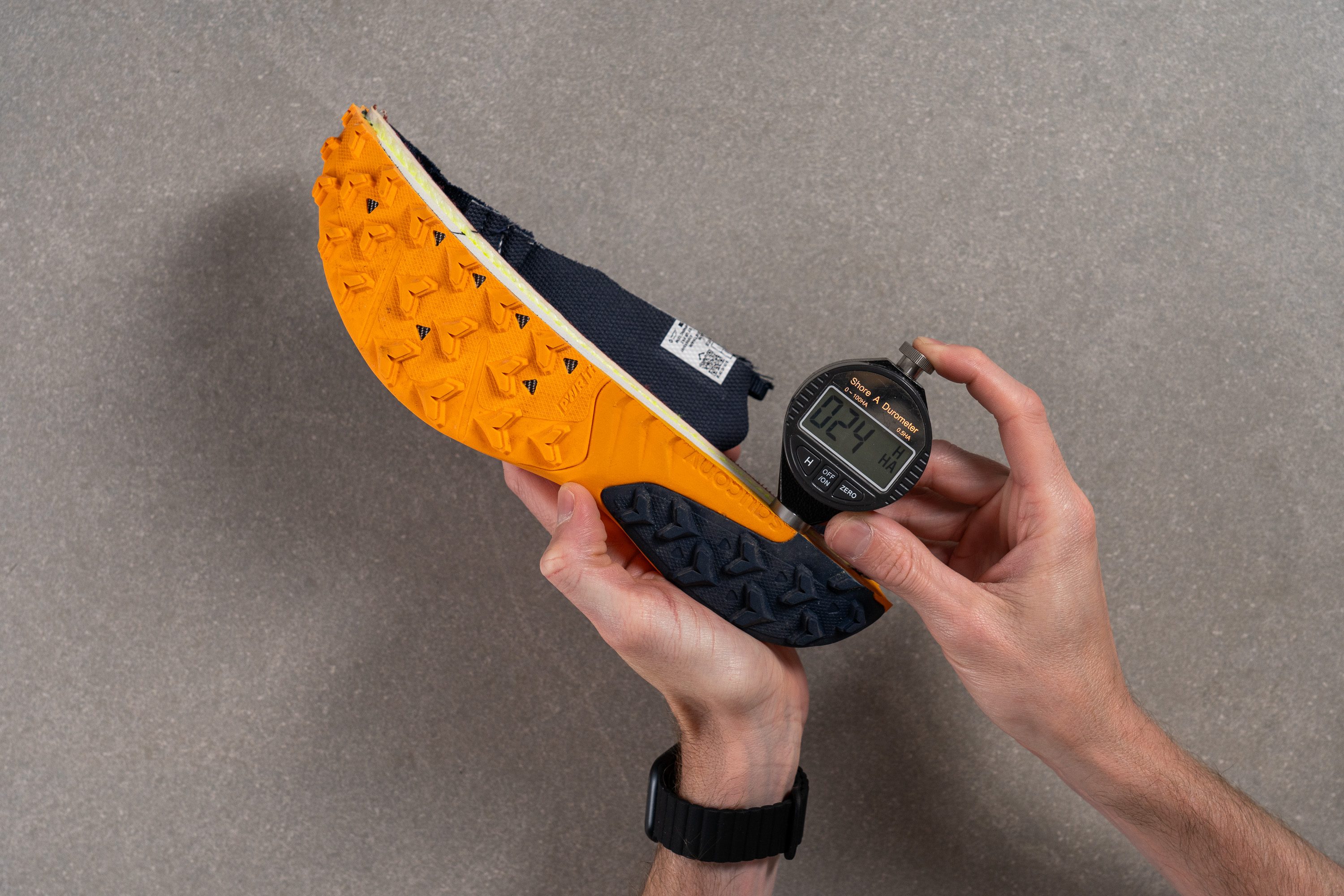
| Xodus Ultra 3 | 24.0 HA |
| Average | 25.5 HA |
Rocker
We observed that the ride of this version is more rockered compared to the flatter silhouette of the Xodus Ultra 2, which offered less assistance for heel strikers.
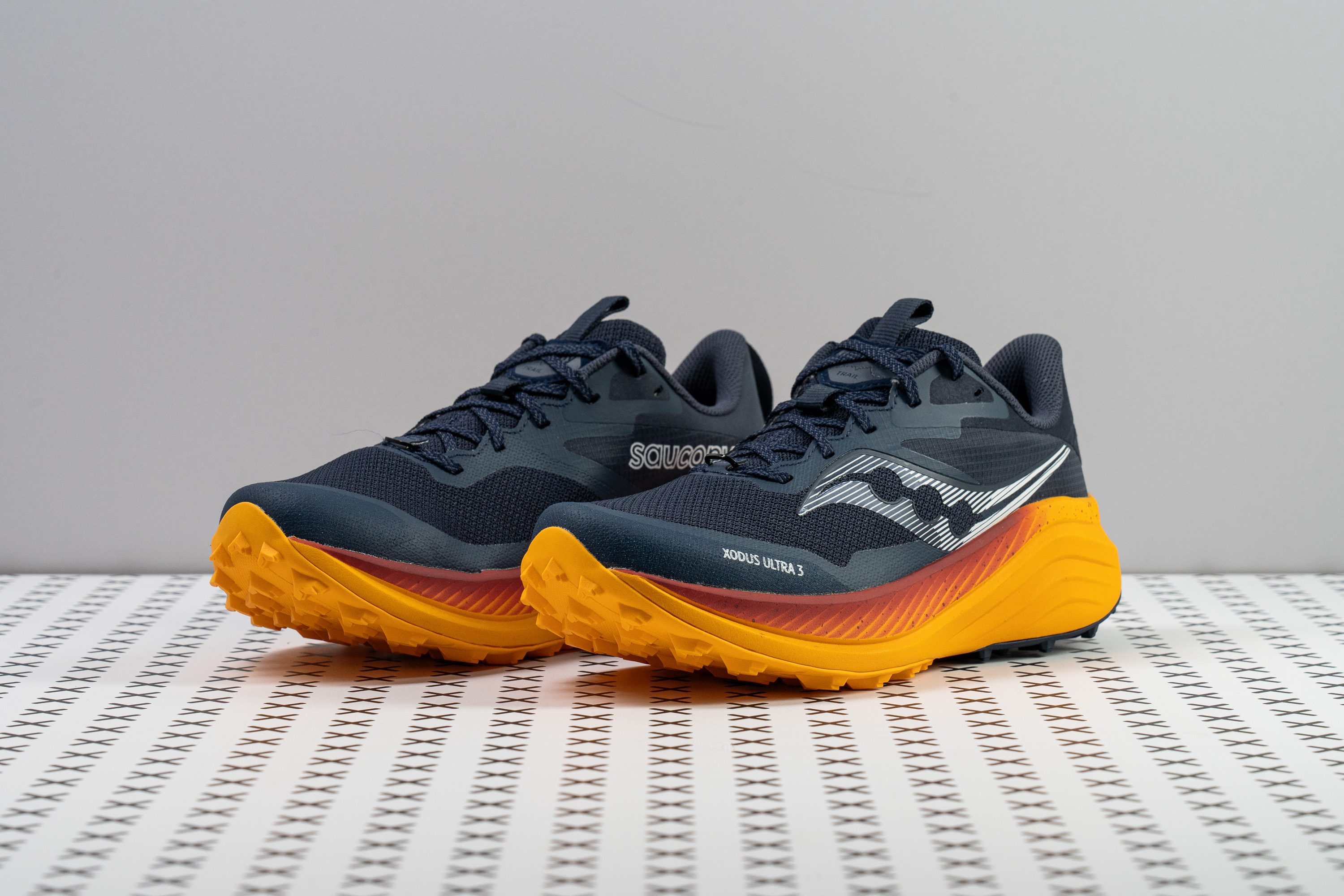
Considering the "Ultra" in its name and the challenges of pushing through those endless races, we're pleased to find this model provides some welcome momentum for our tired legs, especially since many midfoot strikers tend to lose their form and shift to heel striking in the final miles.

Rock plate
We discovered that the Xodus Ultra 3 features a flexible forefoot rock plate that isn't overly intrusive. However, it doesn't provide top-tier protection either.
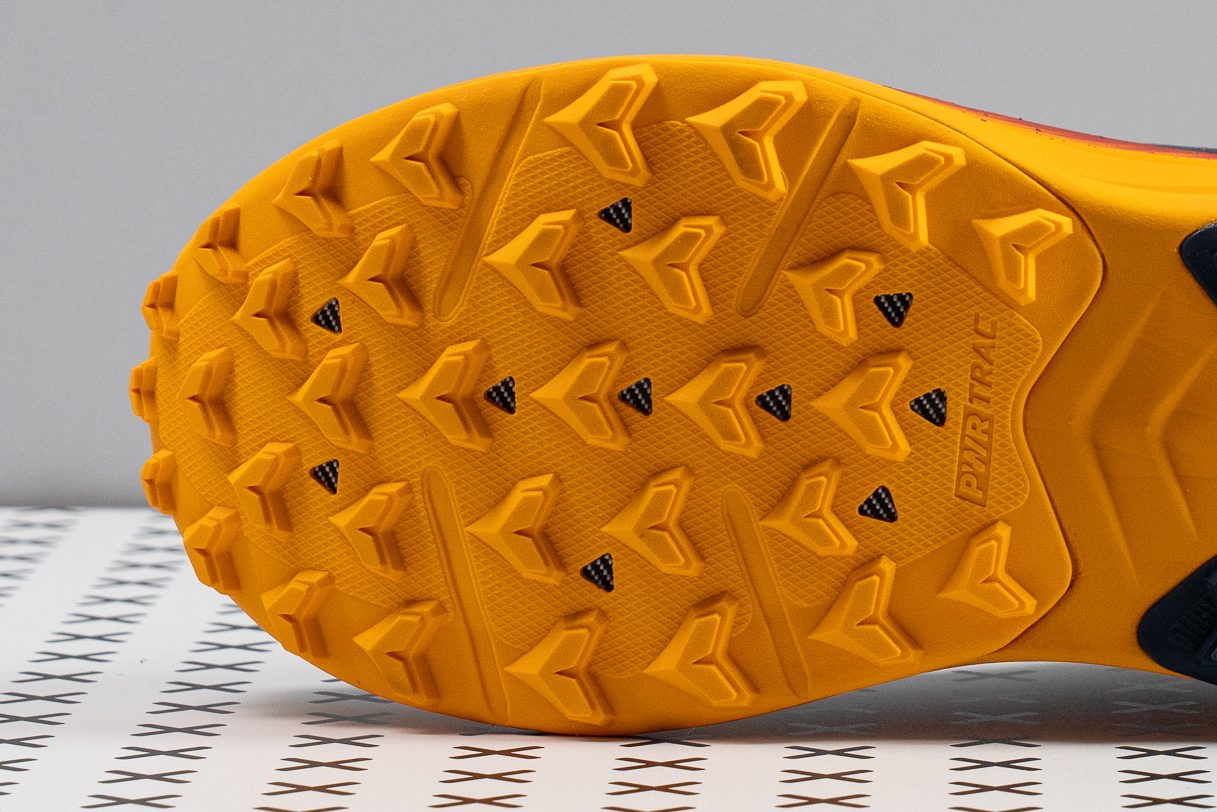
Visible through gaps in the outsole, this softer plate strikes a good balance between protection and flexibility, making it suitable for a versatile trail shoe like this one.
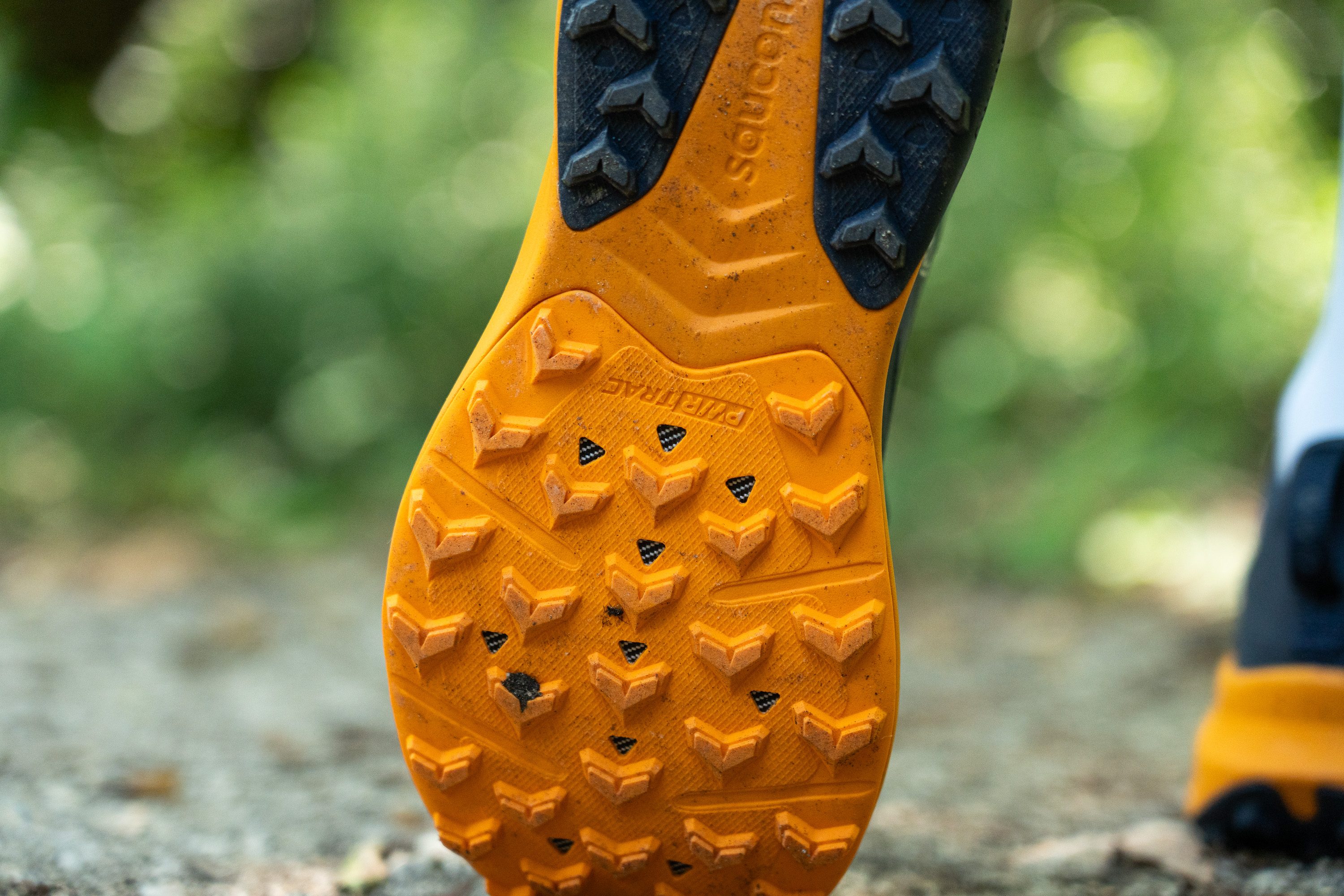
Size and fit
Size
Saucony Xodus Ultra 3 fits true to size (20 votes).
Width / Fit
We found that the shoe's fit remains very similar to previous Xodus versions and is quite average overall, aiming to accommodate as many foot types as possible.
Measuring the widest part of its one-to-one gel interior's replica, we got a standard reading of 95.9 mm. This suggests that most runners will find this shoe comfortably accommodating.
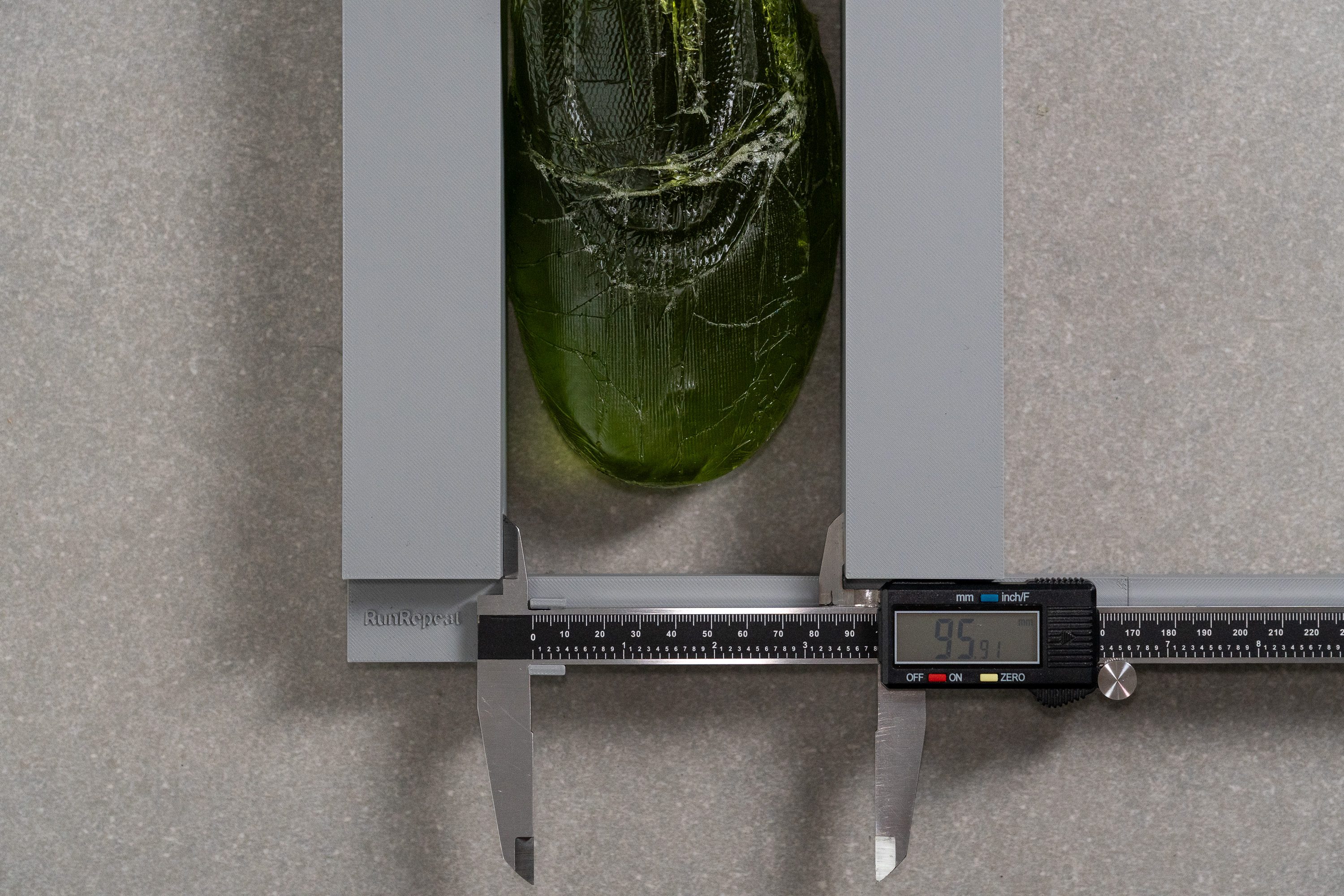
| Xodus Ultra 3 | 95.9 mm |
| Average | 95.7 mm |
Toebox width
The rounded toebox shape of this Saucony shoe also minimises the risk of toe cramping and blistering on a long run. Our calliper showed a regular width of 73.9 mm in the big toe area.

| Xodus Ultra 3 | 73.9 mm |
| Average | 74.7 mm |
Toebox height
We also found that the shoe's toebox height is adequate at 26.9 mm which is crucial for comfort during ultra running.
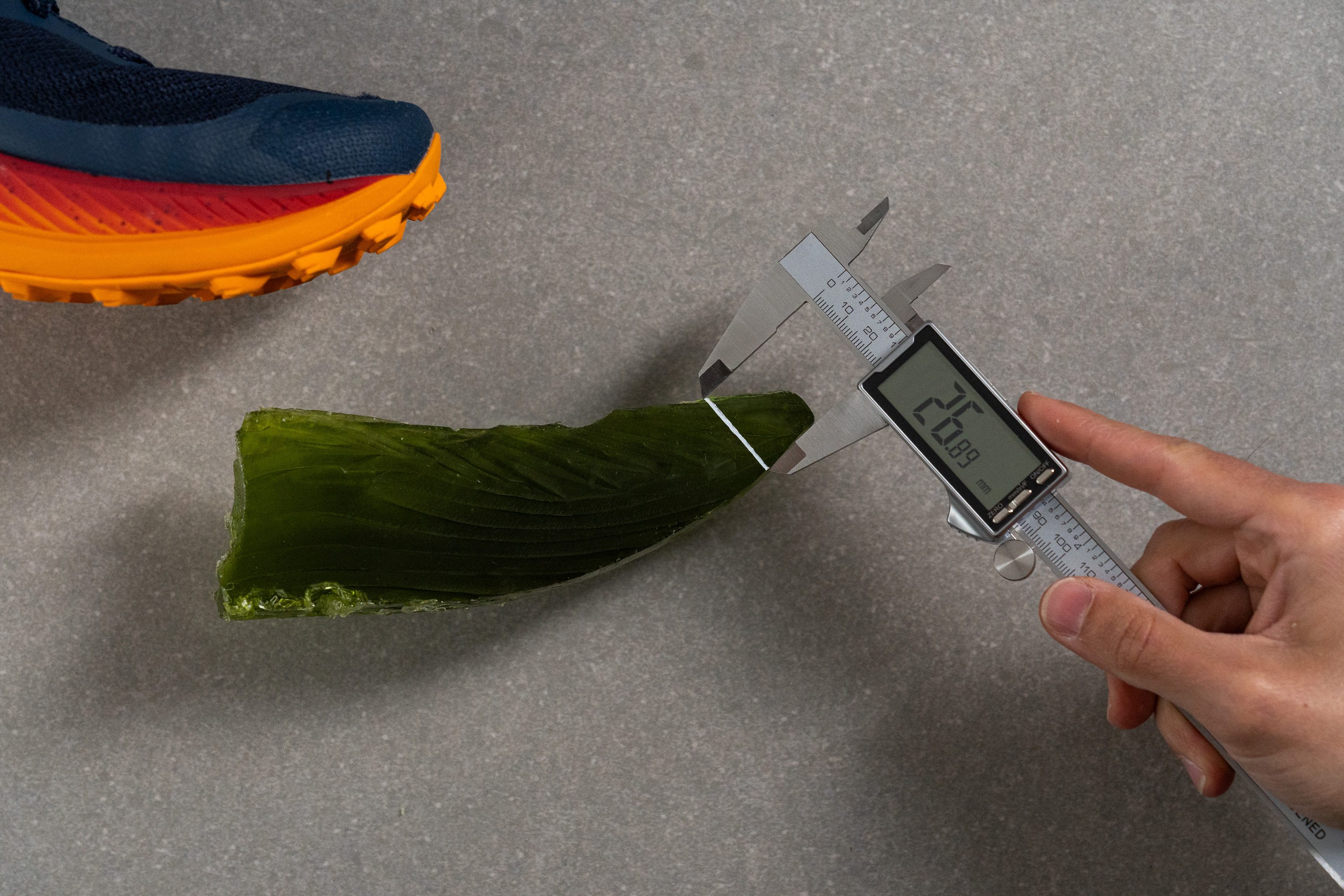
The upper fabric is soft and forgiving enough too.
| Xodus Ultra 3 | 26.9 mm |
| Average | 27.1 mm |
Traction / Grip
Forefoot traction
The Xodus Ultra 3 proved versatile across different surfaces in our SATRA TM144 grip test. Its 0.41 score shows it performs well on dry terrain, damp trails, and even handles more rugged environments for those chasing crazy adventures.
| Xodus Ultra 3 | |
| Average | 0.60 |
Lug depth
The lugs are 4.3 mm deep, making this shoe highly versatile for all types of trails—from the easiest to the most technical. It doesn't excel at any one type, and we found that downhills are its weak point, but it remains a well-rounded option overall for us.

| Xodus Ultra 3 | 4.3 mm |
| Average | 3.5 mm |
Outsole design
We discovered that Saucony sticks with its signature design language in the Xodus Ultra 3, using a PWRTRAC rubber outsole with the midsole exposed for weight savings. The lug layout remains consistent: multi-directional chevron-shaped lugs positioned to adapt to both propulsion and braking, with slight variations in angle depending on the section of the outsole.
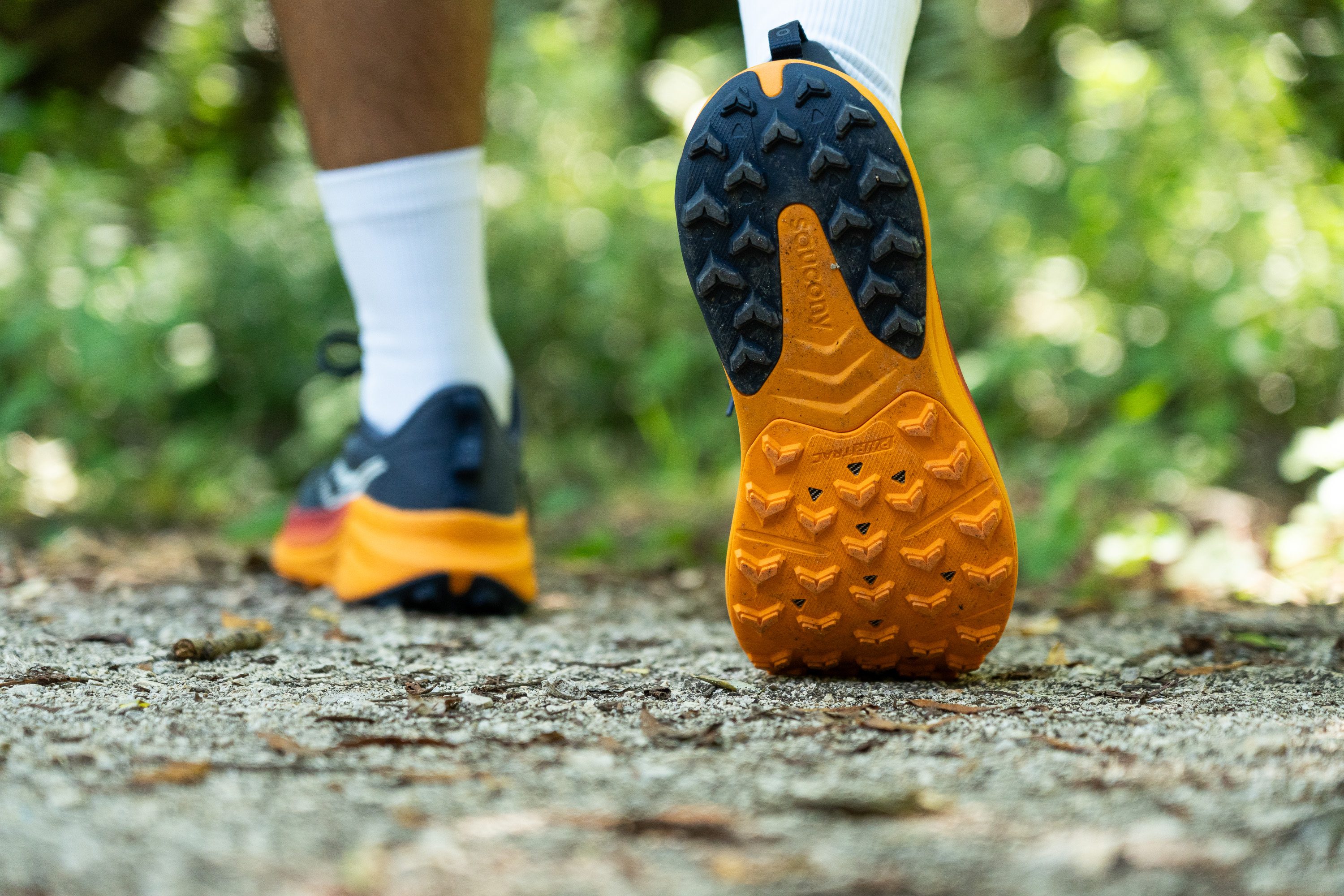
Flexibility / Stiffness
We transitioned from assessing stability to conducting our flexibility test, evaluating the longitudinal stiffness—a crucial aspect for those who wish to use the shoe for hiking, speed walking, or travel.
We found that it required just 15.9N of force to flex the shoe to a 30-degree angle, which aligns well with what we expected from a versatile shoe.
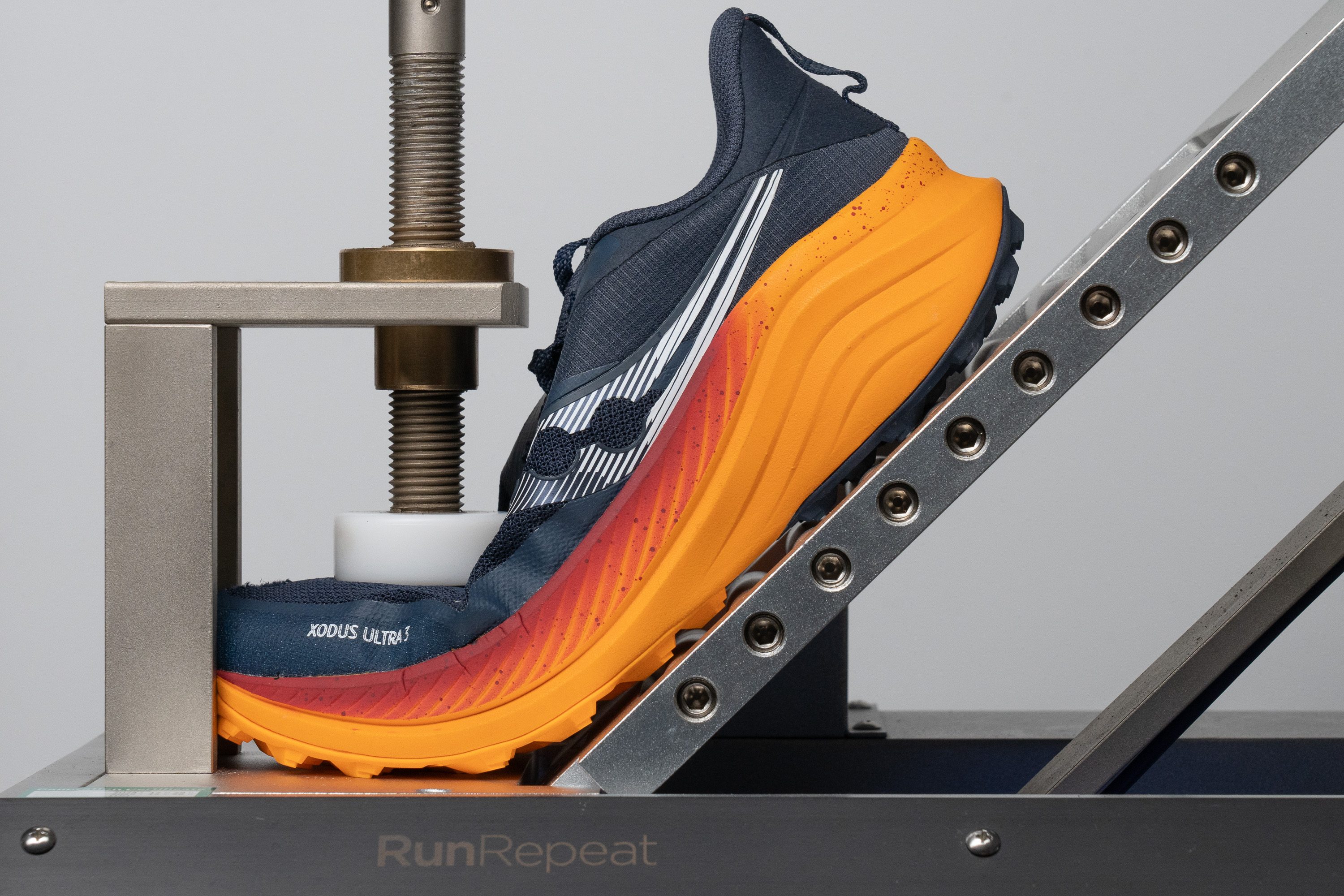
| Xodus Ultra 3 | 15.9N |
| Average | 14.6N |
Stiffness in cold (%)
We placed the Xodus Ultra 3 in our freezer for an additional 20 minutes and then retested its stiffness. What we found was somewhat underwhelming for a Pebax midsole—a 34.8% increase that may be felt in the coldest days of the year.
| Xodus Ultra 3 | 30% |
| Average | 32% |
Weight
For us, the most disappointing aspect of this update is the weight. The Xodus Ultra has never been known for its lightness, and it's disheartening to see Saucony moving in the wrong direction rather than slimming down this shoe.
This time around, our scales registered 10.7 oz or 302g, marking a slight but unwelcome increase from the 10.35 oz (292g) of the previous version.
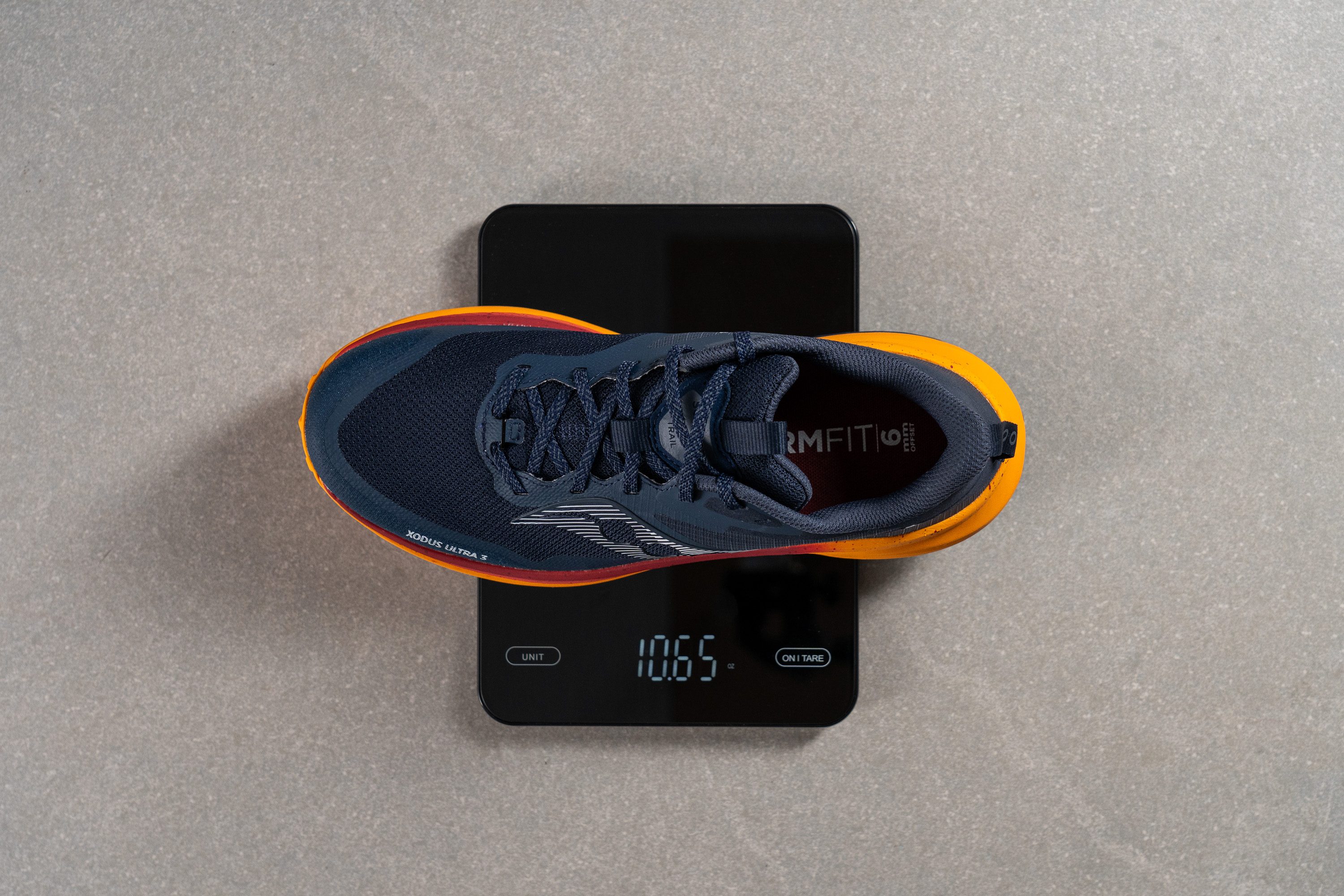
| Xodus Ultra 3 | 10.7 oz (302g) |
| Average | 10.2 oz (289g) |
Breathability
For us, the most disappointing aspect of this update is the weight. The Xodus Ultra has never been known for its lightness, and it's disheartening to see Saucony moving in the wrong direction rather than slimming down this shoe.
This time around, our scales registered 10.7 oz or 302g, marking a slight but unwelcome increase from the 10.35 oz (292g) of the previous version.
Breathability
Crafting a superb upper for trail running shoes is quite the challenge—it needs to balance breathability with warmth for winter use, offer better durability than road shoes, and still provide ample comfort. To assess if the Xodus Ultra 3 meets these demands, we started with our smoke test.
Our initial tests were promising—the XU3 scored a solid 4 out of 5. This result is perfect for mountain use where extreme ventilation isn't always necessary and could even lead to compromises.
Following this, we explored the shoe's construction more closely using a light to pinpoint areas of high breathability. It was evident why the toebox excelled, offering superb airflow.
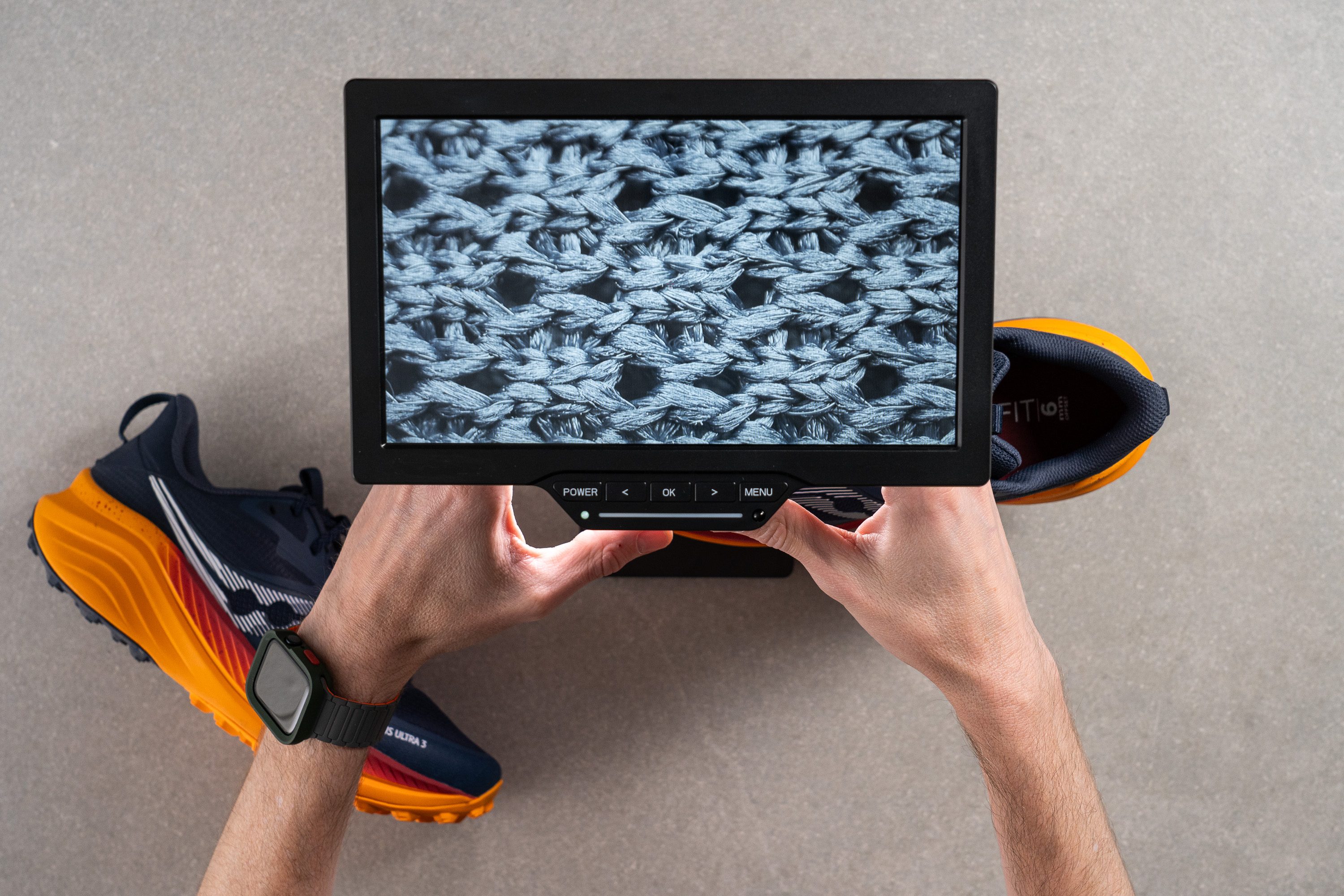
Our microscopic examination revealed the toebox design—no large holes that could risk tearing. Instead, we found tiny, strategically placed gaps that optimise air flow without theoretically compromising durability.
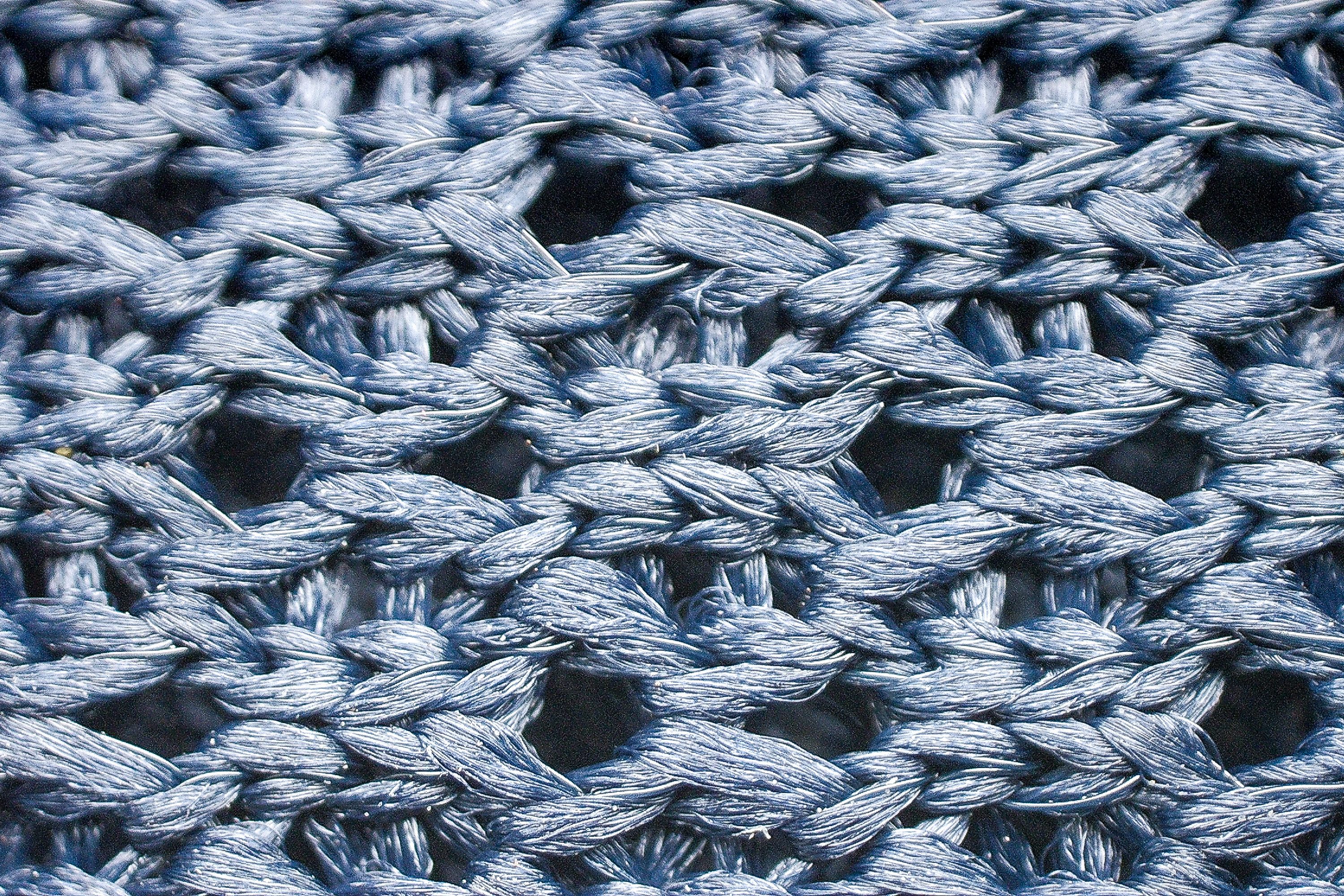
The upper is also remarkably plush, ticking the boxes for both breathability and comfort effortlessly.
Our next step is to verify its toughness, but the initial findings are quite impressive.
| Xodus Ultra 3 | 4 |
| Average | 3.2 |
Stability
Lateral stability test
In trail running shoes, a higher stack height often leads to reduced stability, but this wasn't the case with the Xodus Ultra 3. Let’s explore why!
Torsional rigidity
During our hands-on testing in the lab, we evaluated the torsional stiffness of the shoe and assigned it a rating of 4 out of 5. Such score is expected for a shoe featuring a significant stack height of over 30 mm coupled with a rock plate.
| Xodus Ultra 3 | 4 |
| Average | 3.6 |
Heel counter stiffness
The heel counter really caught us by surprise, as it's less stiff than what we usually see in trail shoes. Yet, the softer 2-out-of-5 counter enhances comfort significantly.
We found this choice interesting because it seems particularly well-suited for runners who strike with their midfoot, aligning well with the Xodus Ultra 3 geometry and drop.
| Xodus Ultra 3 | 2 |
| Average | 3 |
Midsole width - forefoot
The main reason we found the XU3 to feel as stable as version 2 is that Saucony smartly widened the shoe to 116.4 mm from 112.5 mm to balance the increased height.
However, we've observed that the wider midsole does come with a trade-off. It's clear that the Xodus Ultra 3 isn't as nimble as its predecessor, and this change also negatively impacts performance when taking corners.
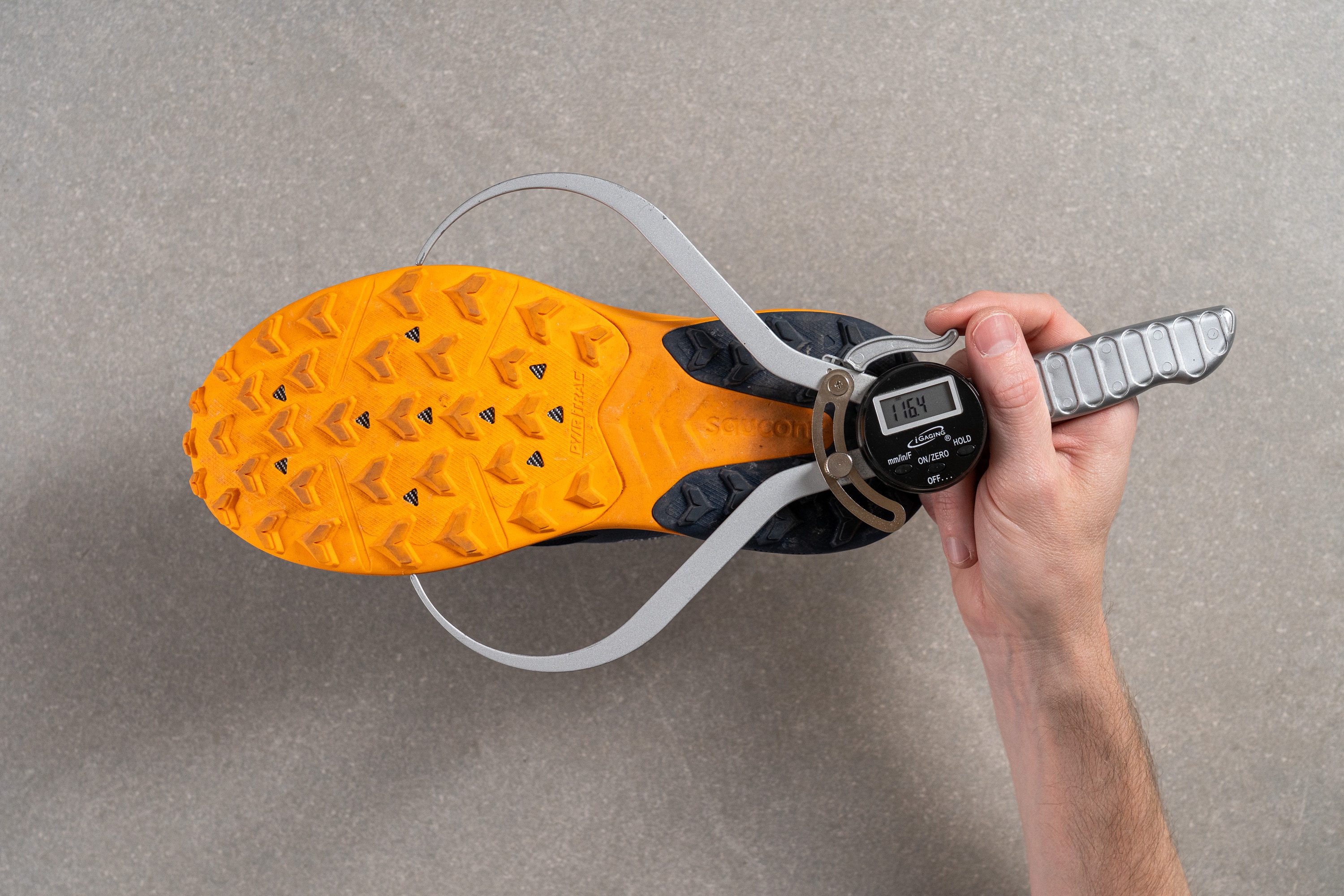
| Xodus Ultra 3 | 116.4 mm |
| Average | 112.8 mm |
Midsole width - heel
The heel also underwent changes, as it expanded to 91.1 mm, a critical improvement for rearfoot strikers.
For less than half an ounce extra, we got more foam and maintained the same stability. It's not a bad trade-off, though we believe Saucony could make slight adjustments to reduce the weight further.
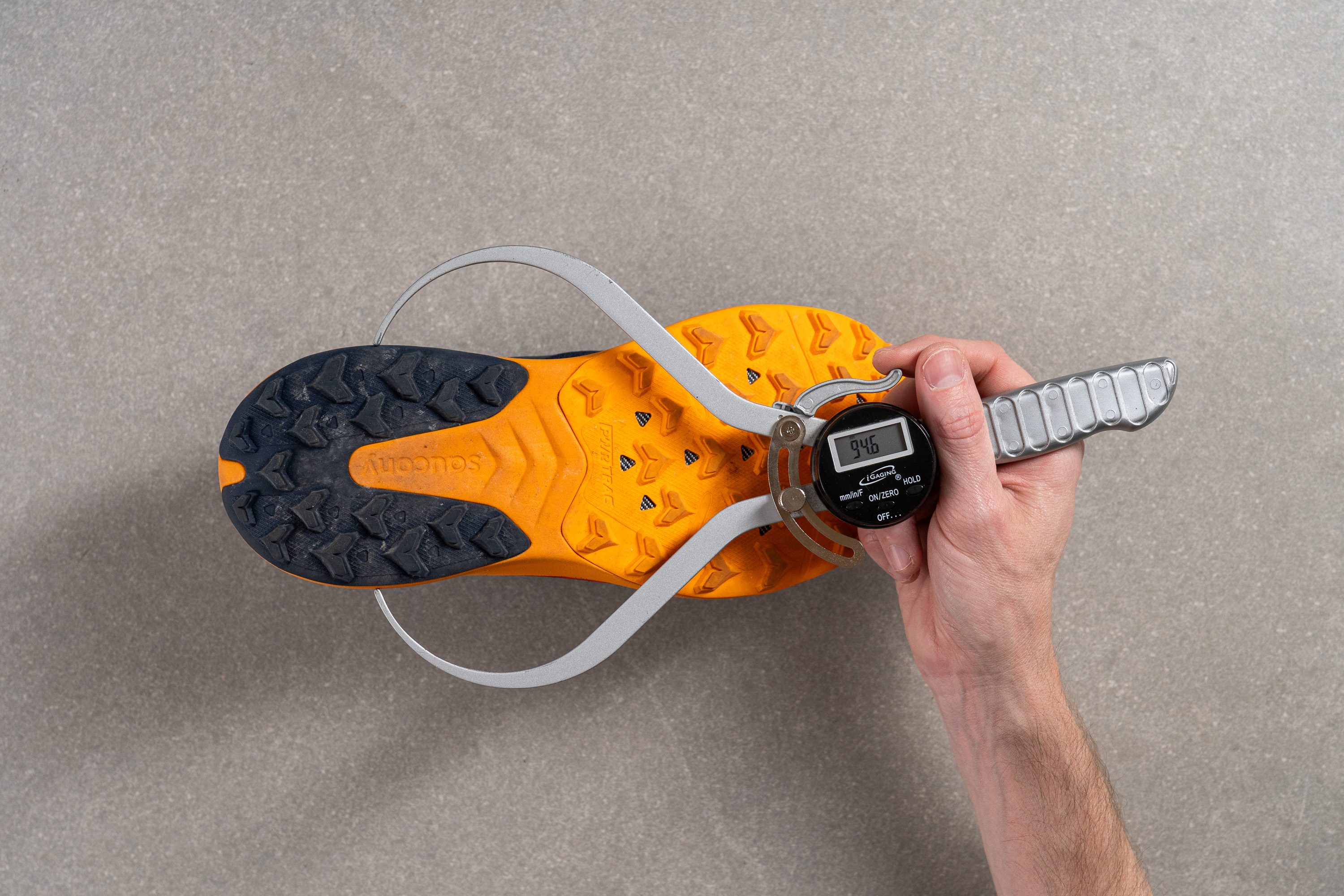
| Xodus Ultra 3 | 94.6 mm |
| Average | 89.9 mm |
Durability
Toebox durability
Following a satisfactory result in our previous test, we now turn our attention to the durability of the Xodus Ultra 3—a crucial factor for any trail running shoe.
We scored it a solid 3 out of 5 in our Dremel resistance test. This score, combined with its superior ventilation and comfort, definitely positions it as one of the best trail uppers we've tested so far.

| Xodus Ultra 3 | 3 |
| Average | 3.1 |
Heel padding durability
Continuing with our lab testing, we shifted from the toebox to the heel padding, where we assigned an impressive score of 4 out of 5.
Although we have yet to assess the outsole, our results thus far have left us quite pleased.
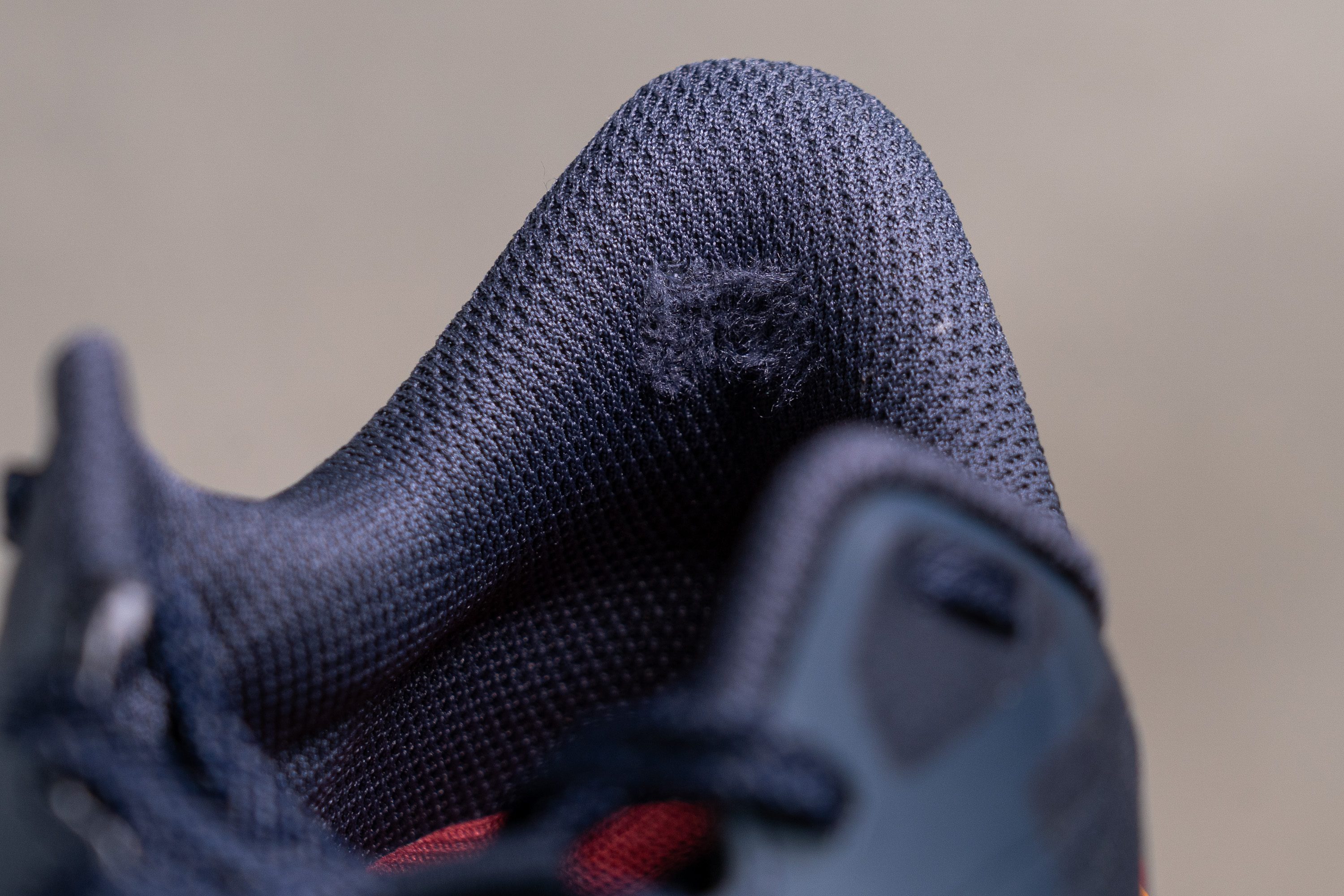
| Xodus Ultra 3 | 4 |
| Average | 3 |
Outsole hardness
We next set out to evaluate the hardness of the PWRTRAC outsole. While it may not quite match the elite performance of world-renowned outsoles like Vibram or Continental, it consistently delivers reliable grip under various conditions.

Upon testing with our durometer, we recorded an 85.5 HC score—solidly average and a safe approach by Saucony.

| Xodus Ultra 3 | 85.5 HC |
| Average | 85.8 HC |
Outsole durability
We were particularly keen to conduct our final Dremel test, especially after its predecessor showed a concerning wear of 1.2 mm.
This time around, we noted a significant improvement with only a 0.8-mm dent recorded, which was quite a relief. This result also shed light on why Saucony opted for harder rubber.

| Xodus Ultra 3 | 0.8 mm |
| Average | 0.9 mm |
Outsole thickness
Building on the improvements noted in our previous tests, it makes sense that Saucony has reduced the outsole thickness to 2.0 mm—excluding the lugs. This adjustment promises a livelier ride and allows for the addition of more foam underfoot!
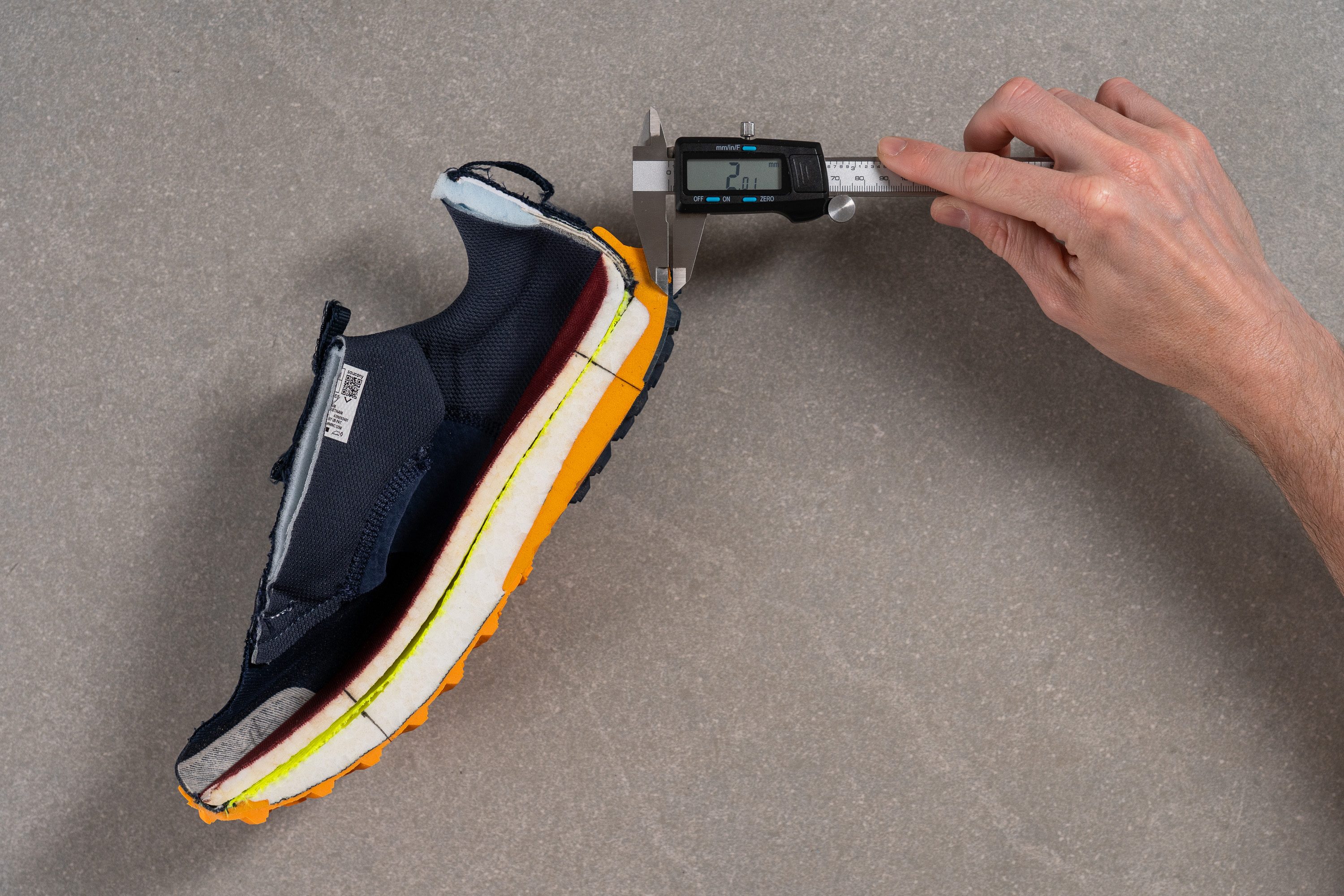
| Xodus Ultra 3 | 2.0 mm |
| Average | 2.2 mm |
Misc
Insole thickness
The insole of the Xodus Ultra 3 stands out as one of the most fascinating features of the shoe, truly distinguishing it from other trail competitors.
While nearly every running shoe, even the pricier ones, uses basic insoles with minimal energy return, the Xodus Ultra 3 features a PWRRUN+ insole that's exceptionally thick, cushy, and bouncy.
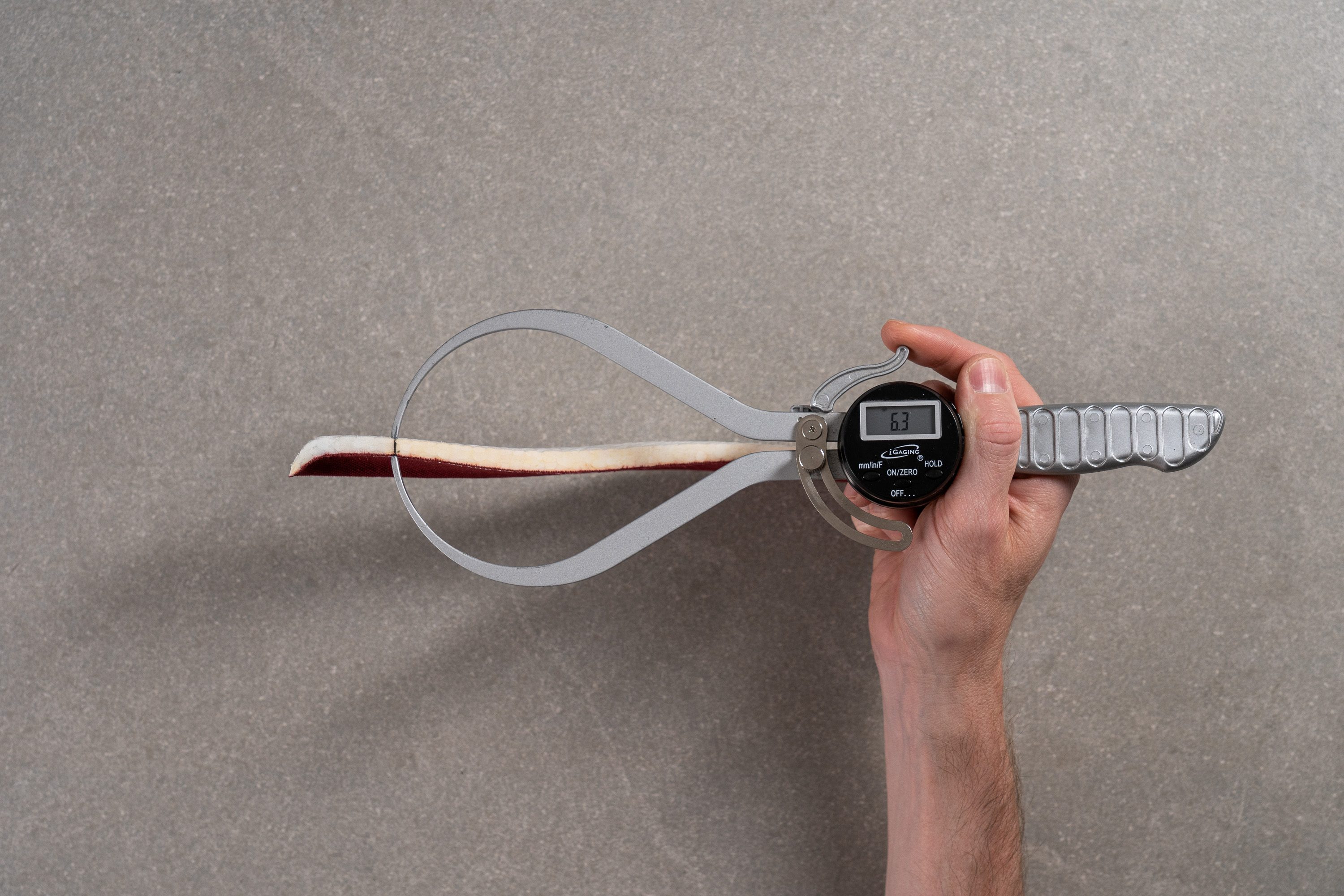
| Xodus Ultra 3 | 6.3 mm |
| Average | 4.7 mm |
Removable insole
You can easily remove the insole and replace it with your preferred footbed, but we don’t recommend it. We found that the stock PWRRUN+ insole is a significant advantage of this shoe—it really enhances performance.
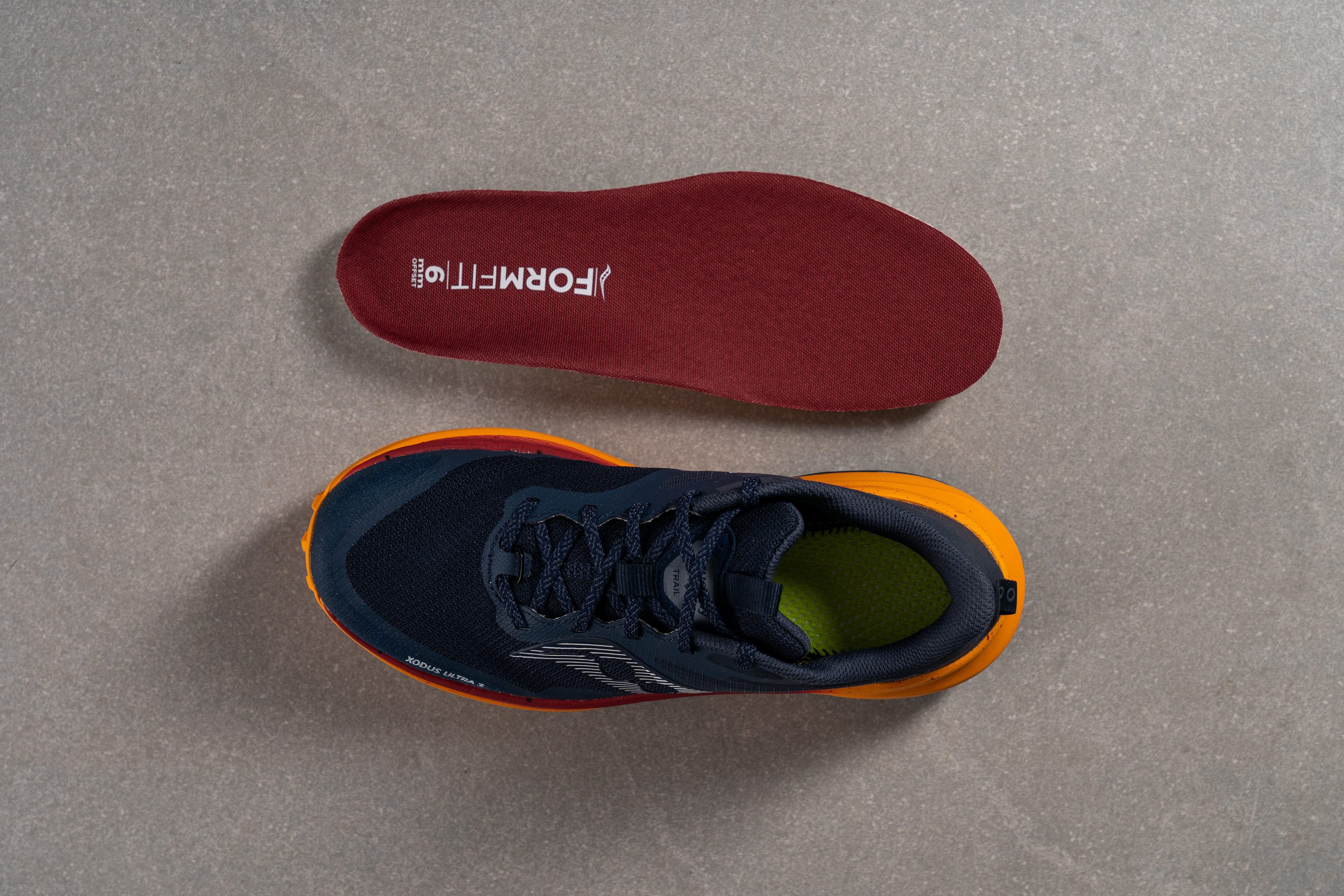
| Xodus Ultra 3 | Yes |
Midsole softness in cold (%)
We previously mentioned that PWRRUN PB is a Pebax-based foam, which should deliver impressive performance in cold temperatures.
To test this, we placed the shoe next to our Italian ice-creams in the freezer and discovered only a 14.2% difference from our earlier measurements—a testament to its consistent performance.

| Xodus Ultra 3 | 14% |
| Average | 26% |
Reflective elements
One of the notable drawbacks of the Xodus Ultra 3 is its complete lack of reflective elements. For a trail shoe positioned at the higher end of the price spectrum, we believe this omission is a significant oversight!
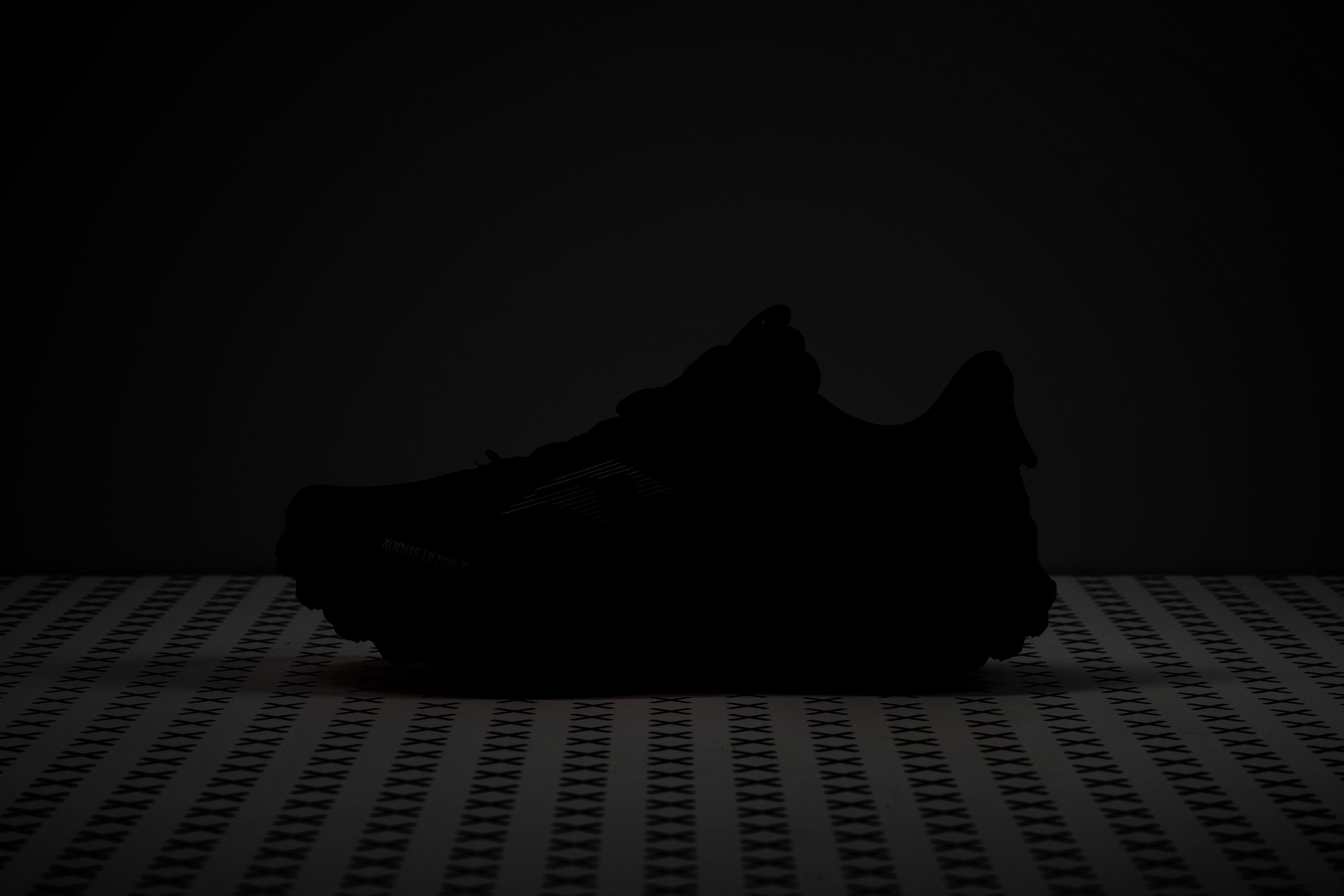
| Xodus Ultra 3 | No |
Tongue padding
From our perspective, Saucony made a puzzling decision with the tongue. We found in our tests that the XU3 is heavier than its predecessor, and we can't see the benefit of adding so much padding (9.8 mm) to the tongue, which only adds to the overall weight.
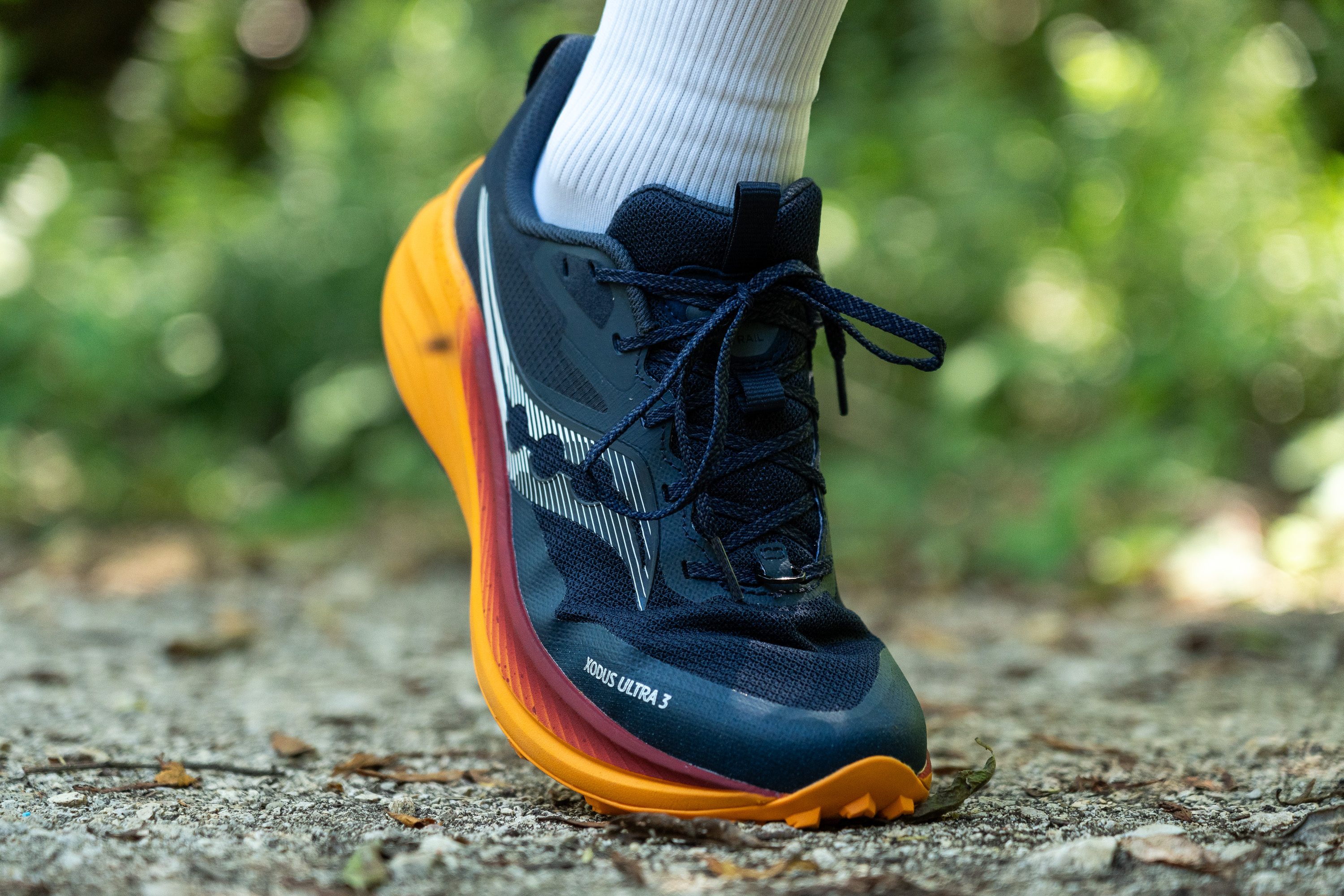
The previous Xodus had a much thinner 3.7-mm tongue, and we believe a slight increase to 5 or 6 mm for added comfort would have been enough. Pushing it to nearly 10 mm seems excessive, though we have to admit it does feel incredibly plush and comfortable.
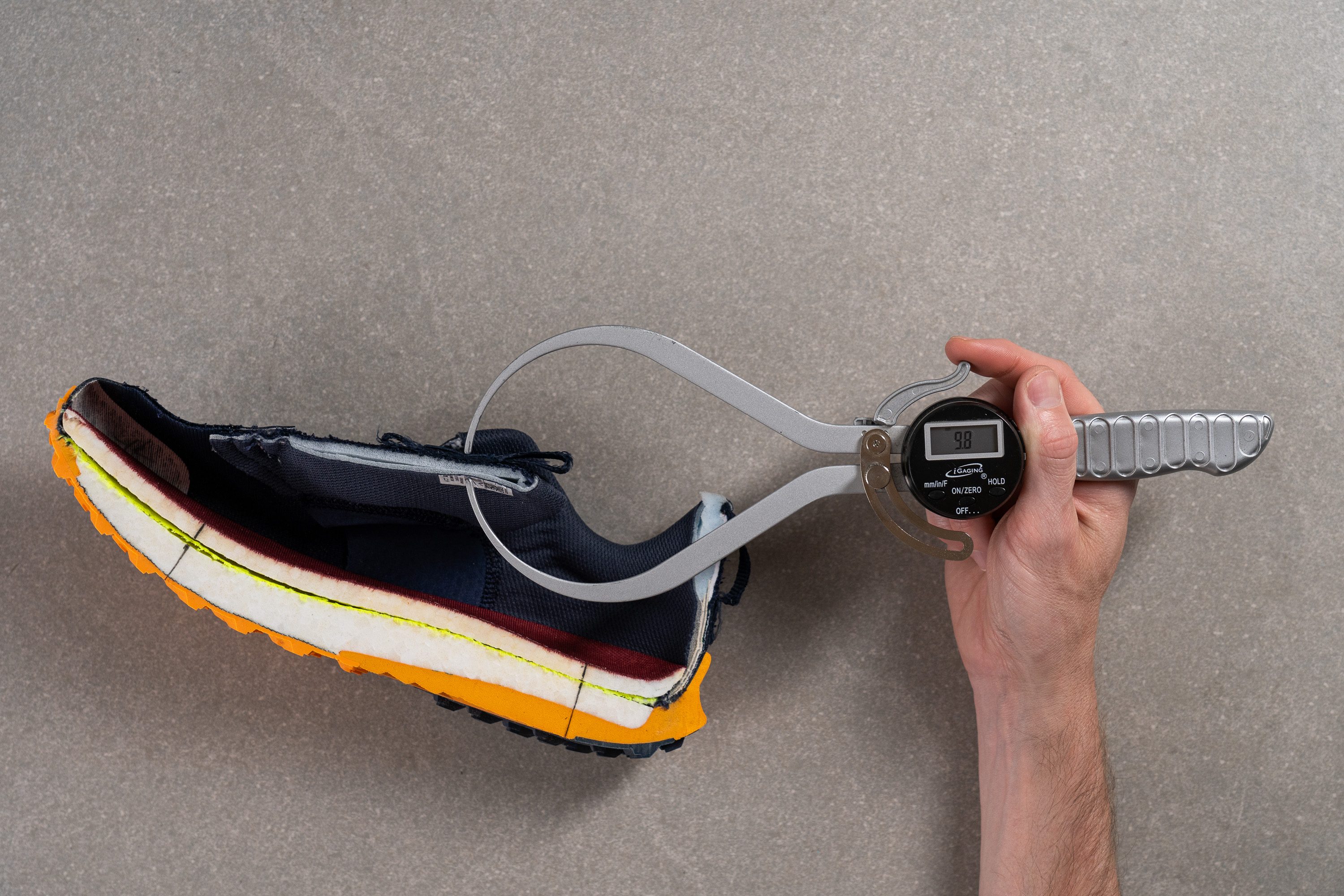
| Xodus Ultra 3 | 9.8 mm |
| Average | 6.4 mm |
Tongue: gusset type
The tongue features a semi-gusseted design, which we find quite satisfactory.
While we typically prefer a fully gusseted tongue in trail shoes to keep out debris and small rocks, the semi-gusset offers its own benefits—like reduced weight. As long as some form of gusset is present in the Xodus Ultra 3, it meets our needs!
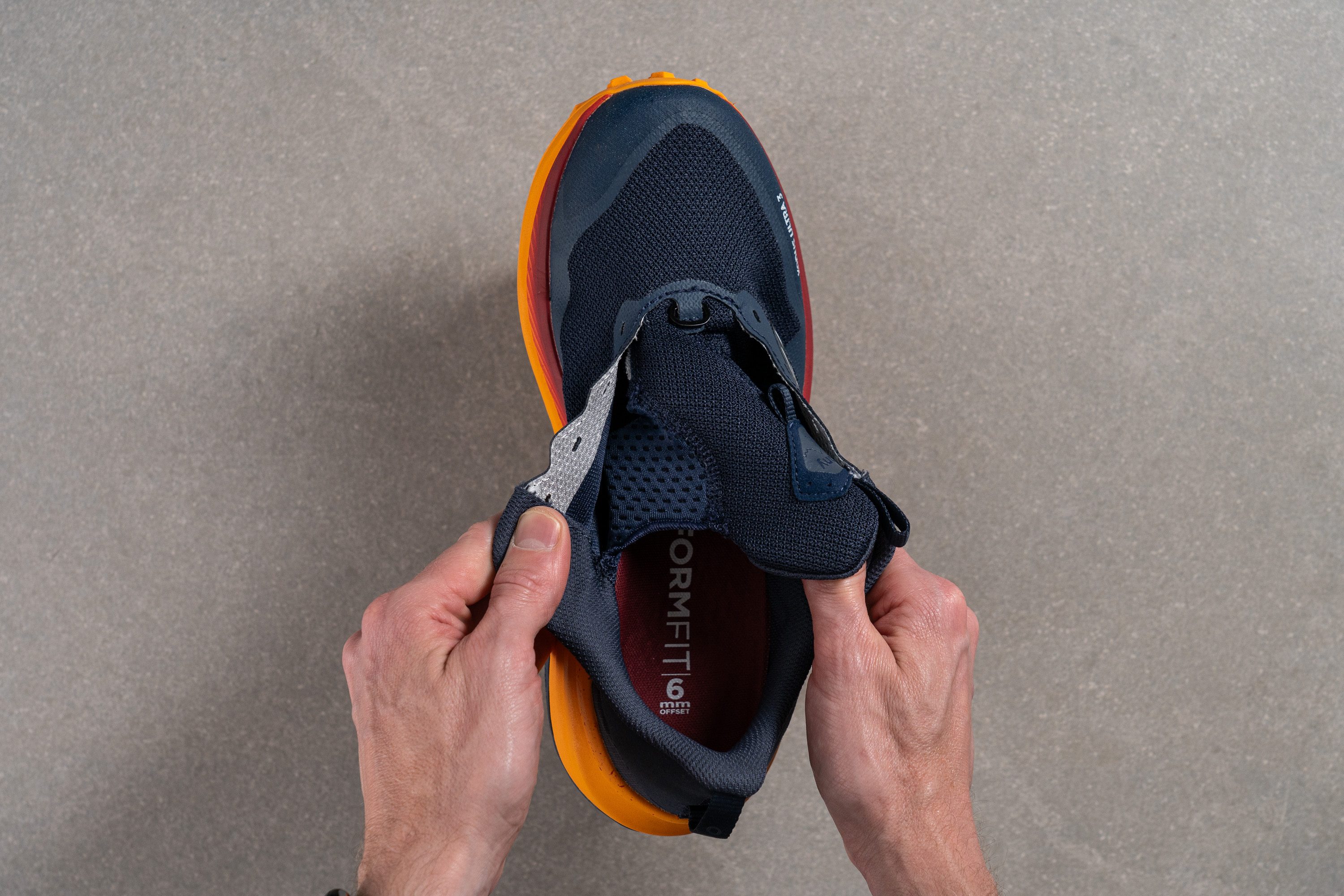
| Xodus Ultra 3 | Both sides (semi) |
Heel tab
The Xodus Ultra 3 keeps the finger-loop heel tab from its predecessor, and from our perspective, it feels sturdy enough to withstand even the toughest pulls without tearing.
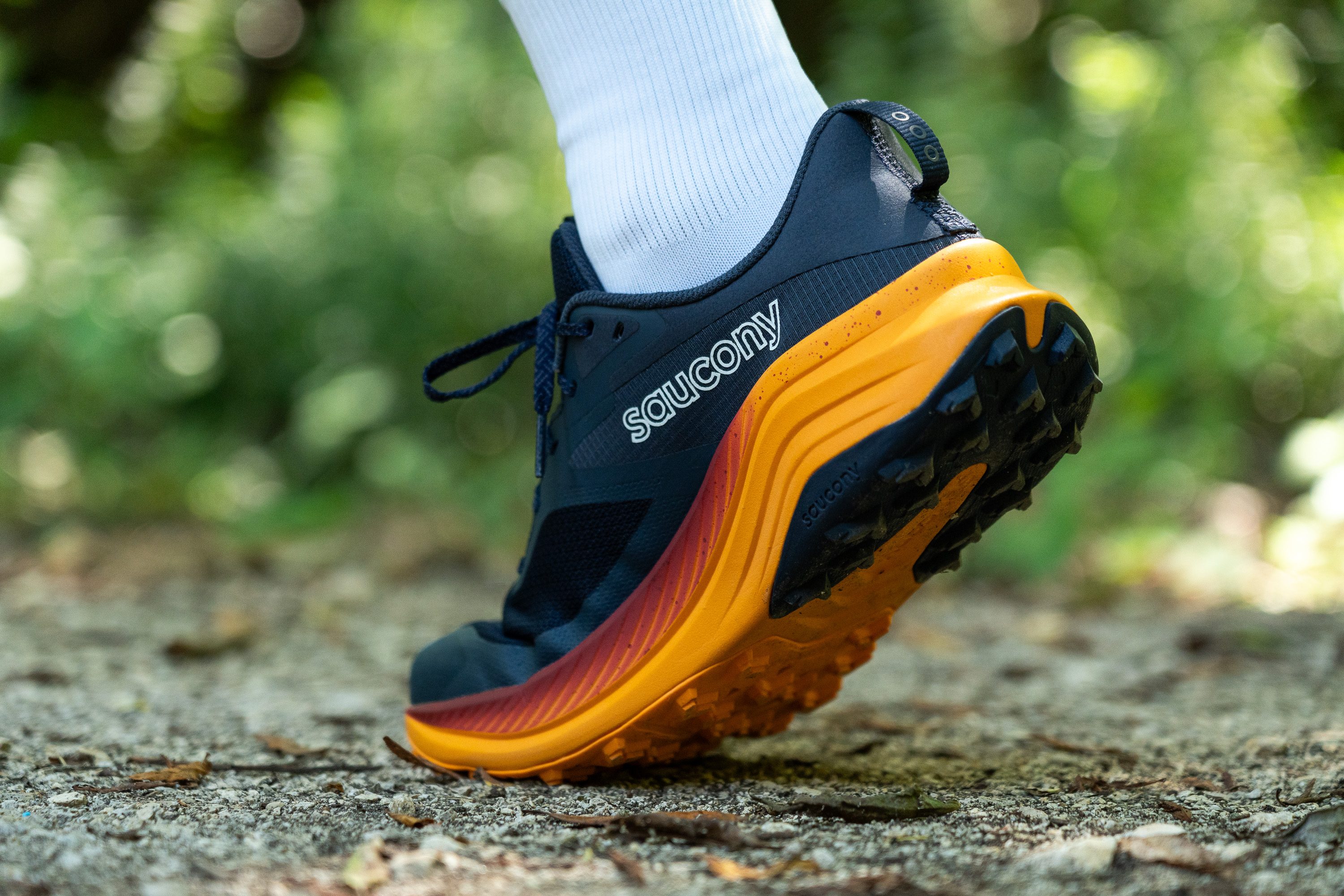
| Xodus Ultra 3 | Finger loop |

